- Published on
What Is Conversion Rate Optimization? Boosting Sales For Ecom Stores
- Authors

- Name
- Darjan Hren
- @darjanhren
In the vast realm of e-commerce, businesses strive to optimize their conversion rates in order to boost sales. Conversion Rate Optimization (CRO) is a practice employed by online retailers to maximize the percentage of website visitors who complete desired actions, such as making purchases or signing up for newsletters. Comparable to a skilled architect meticulously designing the blueprint for a magnificent structure, CRO involves crafting strategies and implementing techniques that enhance user experience and encourage conversions. This article aims to explore the concept of CRO in depth, highlighting its significance and offering valuable insights into effective optimization strategies. By employing best practices and leveraging data-driven approaches, businesses can not only calculate their conversion rates accurately but also improve them over time. The ultimate goal is to maximize sales through continuous testing, iteration, tracking, and analysis of key metrics. With an unwavering focus on customer-centricity, this article endeavors to equip e-commerce store owners with the knowledge needed to harness the power of conversion rate optimization effectively.
- What is Conversion Rate Optimization?
- The Importance of CRO
- Optimization Strategies
- CRO Best Practices
- Calculating Conversion Rate
- Tools for CRO
- 7 Benefits of CRO
- Implementing CRO
- Measuring Conversion
- Improving Conversion Rates
- Landing Page Optimization
- Successful CRO Process
- Achieving Higher Conversion Rates
- 5 Tips for Higher Conversions
- Optimizing Your Website
- CRO Resources
- Getting Started with CRO
- Improving Conversion Rate Optimization
- Subsequent section: 'Effective Call-to-Action Buttons'
- Maximizing Sales
- Testing and Iteration
- Tracking and Analytics
- Conclusion
Key Takeaways
- Conversion Rate Optimization (CRO) is crucial for boosting sales and revenue for e-commerce stores.
- CRO involves optimizing website elements, streamlining the user experience, and employing persuasive techniques to maximize conversions.
- A/B testing is an effective strategy for determining the most effective webpage design and driving higher conversion rates.
- Enhancing user experience, providing a seamless online shopping experience, and optimizing website performance are key to increasing revenue through CRO.
What is Conversion Rate Optimization?
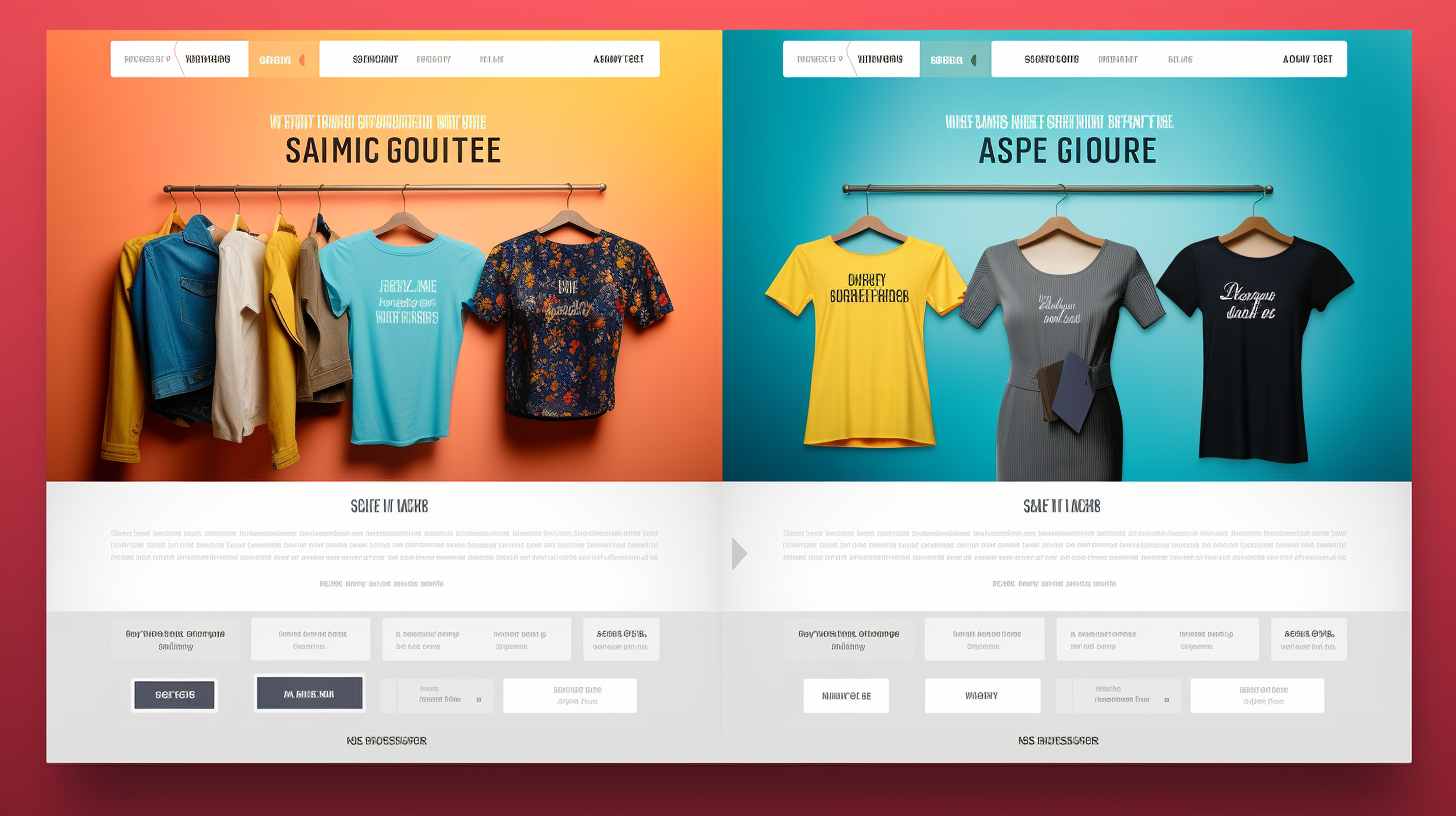
Conversion Rate Optimization (CRO) is a crucial aspect of e-commerce that focuses on boosting sales and increasing revenue. It emphasizes the importance of optimizing website elements, such as landing pages, product descriptions, and checkout processes, to improve customer conversion rates. Key CRO strategies involve conducting A/B testing to identify the most effective design and content variations, implementing persuasive techniques like social proof and scarcity, and streamlining the user experience to minimize friction during the buying process. Measuring conversion success involves tracking key performance indicators such as click-through rates, bounce rates, and average order value to assess the effectiveness of CRO efforts and make data-driven decisions for further optimization.
Importance of CRO
Enhancing the conversion rate optimization strategy is crucial for ecommerce businesses as it acts as a catalyst in bolstering sales, leading to increased revenue and business growth. The importance of CRO lies in its ability to maximize the value of website visitors by converting them into paying customers. By optimizing various elements such as landing pages, checkout processes, and call-to-action buttons, businesses can create a seamless and user-friendly experience that encourages customers to make purchases. Additionally, CRO enables businesses to identify and rectify any barriers or obstacles that may hinder conversions, ultimately boosting sales for ecom stores. It empowers businesses to make data-driven decisions based on customer behavior analysis and market trends. Implementing effective CRO strategies allows businesses to continually improve their website performance and enhance the overall customer journey. Transitioning into the subsequent section about 'key cro strategies', understanding these strategies will further optimize conversion rates for ecommerce stores.
Strategies for CRO to Think About
One effective approach to improving website performance and increasing customer conversions involves implementing key strategies for optimizing the user experience. Conversion rate optimization (CRO) strategies are essential for e-commerce stores looking to boost sales and maximize their online presence. Here are three important CRO strategies that can significantly impact conversion rates:
- A/B Testing: This technique involves comparing two versions of a webpage or element to determine which one performs better in terms of conversions.
- Simplified Checkout Process: Streamlining the checkout process by reducing steps and asking for minimal information can minimize cart abandonment rates.
- Personalization: Tailoring the user experience based on individual preferences, previous behavior, and demographics can greatly increase engagement and conversion rates.
By employing these CRO strategies, e-commerce stores have the potential to enhance their online performance, optimize user experiences, and ultimately drive higher conversion rates. Next, we will explore measuring conversion success without writing 'step'.
Measuring conversion success
Measuring the success of conversions can be achieved through various analytical methods and metrics. One key metric is the conversion rate, which measures the percentage of website visitors who take a desired action, such as making a purchase or filling out a form. By tracking this metric, businesses can determine whether their efforts to increase conversions are effective. Other important metrics include average order value, bounce rate, and customer lifetime value. These metrics provide valuable insights into customer behavior and can help identify areas for improvement in the conversion process. By analyzing these metrics and implementing data-driven strategies, businesses can optimize their conversion rates and ultimately boost sales for e-commerce stores. This section will explore the importance of CRO in further detail by highlighting its impact on business growth and profitability.
The Importance of CRO

Increasing revenue through Conversion Rate Optimization (CRO) is a crucial aspect for e-commerce stores. By analyzing user behavior and making data-driven changes, businesses can enhance the overall user experience on their website. This includes optimizing the layout, design, and functionality to maximize website conversions and ultimately boost sales. Employing CRO strategies not only helps businesses increase revenue but also ensures that customers have a seamless and satisfying online shopping experience.
Increasing revenue through CRO
To unlock the untapped potential of e-commerce stores, harnessing the power of conversion rate optimization is akin to discovering a hidden treasure trove within the vast ocean of online transactions. Increasing conversion rates through CRO not only boosts sales but also maximizes revenue for businesses. By employing data-driven strategies and customer-focused techniques, e-commerce stores can optimize their websites to effectively convert visitors into customers. Through A/B testing, heat mapping, and other analytical tools, businesses can identify areas of improvement in their online sales funnel and implement changes that result in higher conversion rates. This leads to increased sales and ultimately greater revenue generation. By enhancing user experience, businesses can further capitalize on this optimized conversion rate and continue to drive growth in their e-commerce endeavors without missing a beat.
Enhancing user experience
Enhancing user experience involves creating a seamless and intuitive online platform that engages customers, encourages exploration, and facilitates effortless navigation. To achieve this, e-commerce businesses should focus on the following key aspects:
- Streamlined Design: A visually appealing website with clear and concise layouts improves user engagement and reduces bounce rates.
- Personalization: Tailoring content based on customer preferences enhances their overall experience and increases the likelihood of conversions.
- Fast Loading Speed: Slow-loading websites frustrate users and negatively impact conversion rates. Optimizing loading times is crucial for a positive user experience.
- Mobile Optimization: With the increasing use of smartphones for online shopping, ensuring mobile compatibility is essential to provide a seamless experience across devices.
By prioritizing these elements, businesses can create an environment where visitors are more likely to convert into paying customers. Maximizing website conversions requires not only enhancing user experience but also implementing strategic tactics to boost sales further in the e-commerce realm.
Maximizing website conversions
Maximizing website conversions requires a strategic approach that capitalizes on user engagement and seamlessly guides visitors towards desired actions. Conversion rate optimization (CRO) plays a vital role in boosting sales for eCommerce stores. By analyzing data-driven insights, businesses can identify areas of improvement and craft persuasive strategies to enhance the customer experience.
To maximize website conversions, it is crucial to optimize various elements such as compelling call-to-action buttons, intuitive navigation, and streamlined checkout processes. A well-designed landing page with relevant content and clear value propositions can significantly impact conversion rates. Implementing customer-focused techniques like personalized recommendations, social proof, and urgency tactics can also drive sales.
By continually testing and refining these optimization strategies, businesses can create an effective framework that consistently improves their conversion rates. Transitioning into the subsequent section about 'optimization strategies,' it is essential to explore different approaches that cater to specific customer segments and align with business objectives.
Optimization Strategies
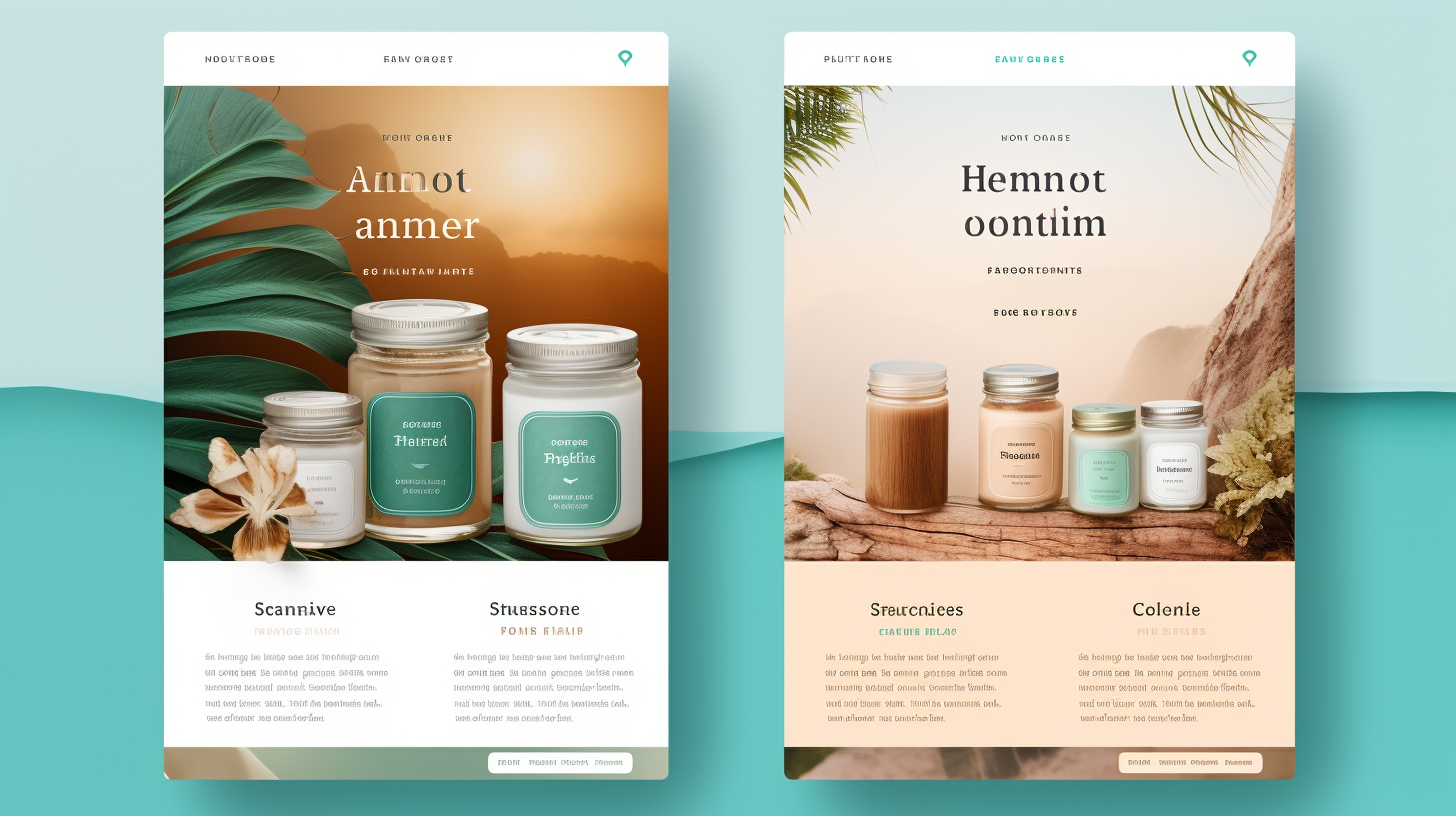
This discussion will focus on three key optimization strategies: A/B testing techniques, user-friendly website design, and a streamlined checkout process. A/B testing allows businesses to compare two different versions of a webpage to determine which one performs better in terms of conversion rates. User-friendly website design aims to enhance the overall customer experience by making navigation intuitive and content easily accessible. A streamlined checkout process reduces friction for customers during the purchasing journey, increasing the likelihood of completed transactions. These strategies are data-driven, persuasive, and customer-focused, aiming to maximize conversions and improve sales for e-commerce stores.
A/B testing techniques
One effective strategy for optimizing conversion rates is through the use of A/B testing techniques, which can significantly impact sales growth for e-commerce stores. A/B testing involves creating two versions of a webpage or element, such as a headline or call-to-action button, and randomly showing each version to visitors. By comparing the performance of these variations, marketers can identify which version leads to higher conversions. A/B testing offers several benefits for conversion rate optimization strategies:
- Provides objective data: A/B testing allows businesses to make data-driven decisions by collecting quantitative information on user behavior and preferences.
- Reduces risk: Testing different elements before implementing changes site-wide minimizes the risk of negative impacts on overall conversion rates.
- Optimizes customer experience: By identifying and implementing the best-performing variations, businesses can create a more personalized and engaging experience for their customers.
- Increases revenue potential: Through continuous testing and improvement, businesses can maximize their sales potential.
With an understanding of effective A/B testing techniques, it is possible to transition into discussing the importance of user-friendly website design in boosting conversion rates without skipping a beat.
User-friendly website design
User-friendly website design plays a crucial role in creating a seamless and enjoyable online experience that resonates with users on an emotional level. By understanding user behavior and employing effective website optimization techniques, e-commerce stores can significantly boost their conversion rates and ultimately increase sales. A user-friendly design enhances the overall usability of the website, making it easier for customers to navigate through different pages, find desired products, and make purchases. Incorporating intuitive menus, clear navigation paths, and visually appealing layouts aids in engaging users and keeping them invested in the site. Additionally, optimizing loading speeds and ensuring mobile responsiveness further enhances user experience. By prioritizing user-friendly website design, e-commerce businesses can foster trust and credibility among potential customers while encouraging them to explore further. This ultimately paves the way for a streamlined checkout process that minimizes friction during purchase completion.
Keywords: user behavior, website optimization
Checkout flow without friction
A streamlined checkout process acts as a frictionless pathway for customers, guiding them seamlessly towards the completion of their purchase like a well-paved road leading to a destination. It is a crucial element in conversion rate optimization and plays a significant role in boosting sales for e-commerce stores. By optimizing the checkout process, businesses can reduce cart abandonment rates, increase customer satisfaction, and ultimately drive more sales. A streamlined checkout process minimizes distractions, eliminates unnecessary steps, and provides clear instructions to customers at each stage of the transaction. This enhances the overall user experience and encourages customers to complete their purchases without any frustrations or complications. Studies have shown that even small improvements in the checkout process can lead to substantial increases in conversions and revenue. Therefore, implementing a streamlined checkout process is essential for e-commerce stores looking to maximize their sales potential.
| Benefit | Description |
|---|---|
| Reduced Abandonment | A streamlined checkout process reduces cart abandonment rates by minimizing distractions. |
| Improved UX | Clear instructions and simplified steps enhance the user experience during the transaction. |
| Increased Sales | Optimizing the checkout process leads to higher conversion rates and ultimately boosts sales |
Transitioning into the subsequent section about 'best practices,' it is important to explore various strategies that can further optimize the customer journey towards completing a purchase on an e-commerce website.
CRO Best Practices
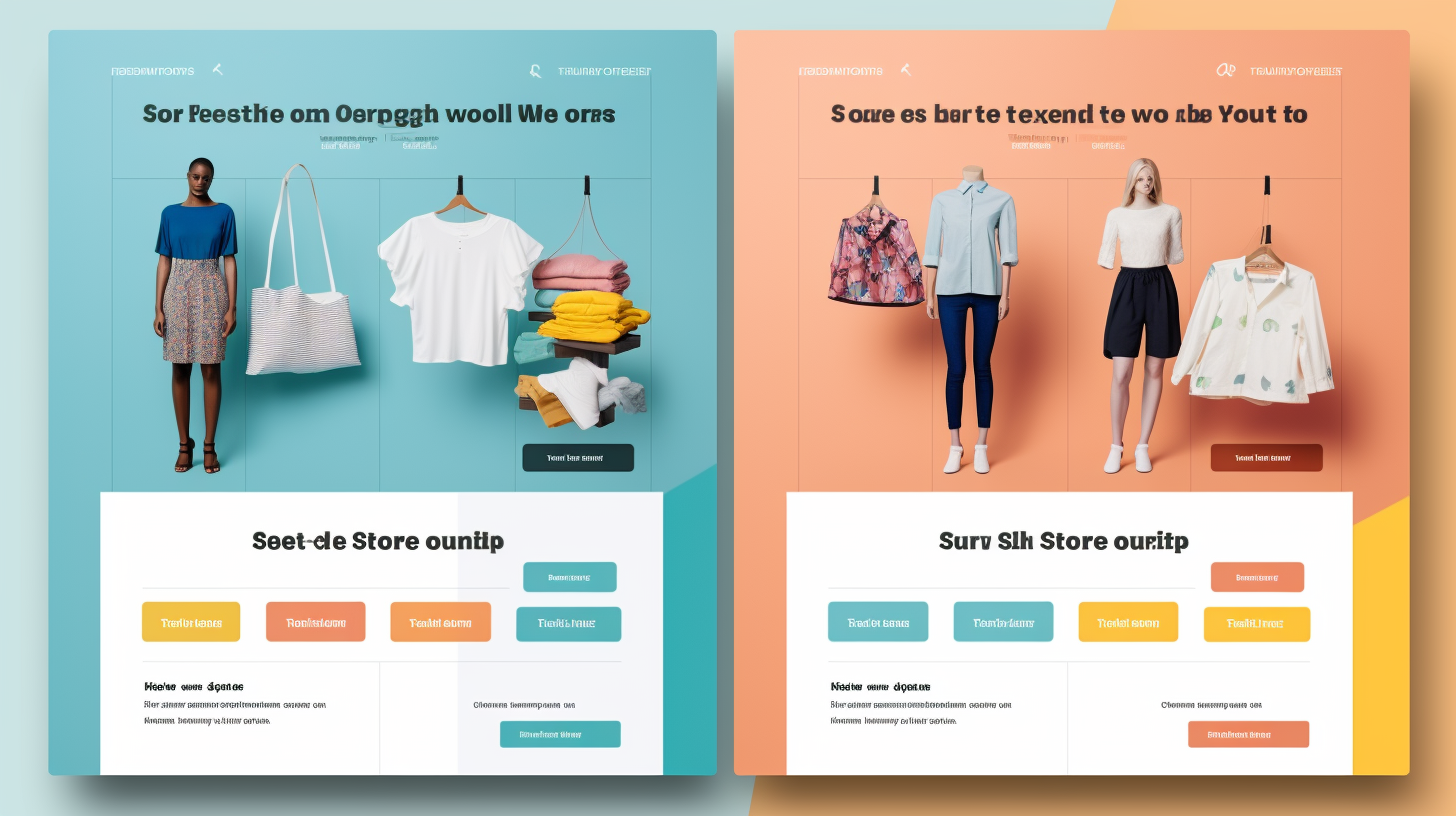
This discussion will focus on best practices for optimizing conversion rates on e-commerce websites. These include designing a user-friendly website with clear call-to-action buttons, ensuring a streamlined checkout process, implementing A/B testing strategies, and providing personalized product recommendations. These practices have been shown to be effective in driving sales and improving the overall customer experience. By following these guidelines, businesses can enhance their website's functionality and increase the likelihood of converting visitors into customers.
User-friendly website design best practices
Optimizing website design to enhance usability and streamline navigation is pivotal in boosting conversion rates for e-commerce stores. A user-friendly website design can significantly impact a customer's shopping experience, leading to increased sales. To achieve this, consider the following best practices:
- Intuitive layout: A well-organized and visually appealing layout allows customers to easily locate products and navigate through different sections of the website.
- Clear and concise product descriptions: Providing accurate and detailed information about products helps customers make informed purchasing decisions.
- Seamless checkout process: Simplifying the checkout process by minimizing steps and offering multiple payment options can reduce cart abandonment rates.
By implementing these user-friendly design elements, e-commerce stores can create a positive shopping experience that encourages customers to complete their purchases. The next section will explore the importance of clear call-to-action buttons in further optimizing conversion rates.
Clear call-to-action buttons
Clear call-to-action buttons play a crucial role in guiding users towards desired actions on a website and enhancing their overall browsing experience. These buttons act as signposts, directing users to take specific actions that lead to conversions. By using clear call-to-action buttons, e-commerce stores can significantly improve their conversion rate optimization (CRO) efforts and boost sales.
To illustrate the importance of clear call-to-action buttons, consider the following table:
| Column 1 | Column 2 | Column 3 |
|---|---|---|
| Easy to Find | Visually Distinct | Action-Oriented |
| Users should be able to locate the call-to-action buttons easily without any confusion or effort. | The buttons must stand out from the rest of the page elements, using contrasting colors or bold typography. | The text on the button should clearly convey what action will occur upon clicking it, such as "Buy Now" or "Add to Cart." |
Ensuring these three characteristics in call-to-action buttons maximizes their effectiveness and encourages users to complete desired actions.
Next, we will discuss how a streamlined checkout process contributes to improved conversion rates for e-commerce websites without compromising security measures.
Streamlined checkout process
A streamlined checkout process is an essential aspect of a user-friendly e-commerce website, but what factors contribute to its effectiveness in driving successful transactions? Research shows that a simplified and efficient checkout process can significantly boost sales for online stores. To achieve this, it is crucial to minimize the number of steps required for customers to complete their purchase. This reduces the likelihood of cart abandonment and improves conversion rates. Moreover, integrating features such as guest checkout options, auto-fill forms, and progress indicators can enhance the overall user experience. Additionally, providing multiple secure payment options instills trust in customers and encourages them to proceed with their purchase. By optimizing the streamlined checkout process, e-commerce businesses can maximize conversions and ultimately increase sales revenue. Transitioning into the subsequent section about A/B testing strategies allows companies to further refine their optimization efforts.
Key Points:
- Minimize steps required for checkout
- Features like guest checkout, auto-fill forms, and progress indicators
- Provide multiple secure payment options
Transitioning into the subsequent section about 'a/b testing strategies', e-commerce businesses can continue refining their optimization efforts without missing a step.
A/B testing strategies
To further optimize the streamlined checkout process, e-commerce stores can implement A/B testing strategies. A/B testing involves creating two or more versions of a webpage and randomly assigning users to different versions. By comparing user behavior and conversion rates between the variations, valuable insights can be gained to inform decision-making and drive improvements.
In order to effectively conduct A/B testing, it is crucial to define clear goals and metrics that align with the overall objective of boosting sales. This could include measuring click-through rates, bounce rates, average order value, or conversion rates. Additionally, it is important to consider variables such as layout design, button placement, form fields, and call-to-action language.
By leveraging data-driven insights from A/B testing strategies, e-commerce stores can make informed decisions about optimizing their checkout process for maximum conversions. These optimizations ultimately lead to increased sales and customer satisfaction.
Transition: Another effective strategy for boosting sales in e-commerce stores is through personalized product recommendations...
Personalized product recommendations
Personalized product recommendations have proven to be an effective strategy for enhancing the shopping experience and increasing customer engagement in online retail environments. By leveraging data-driven techniques, conversion rate optimization can be achieved by tailoring product suggestions to individual customers. These personalized recommendations take into account various factors such as browsing history, purchase behavior, and demographic information.
Studies have shown that customers are more likely to make a purchase when presented with relevant and personalized product suggestions. This approach not only improves the overall shopping experience but also boosts sales for e-commerce stores. Customers feel valued when they are offered products that align with their interests and preferences, leading to increased customer satisfaction and loyalty.
Incorporating personalized product recommendations as part of a conversion rate optimization strategy can significantly impact an e-commerce store's success. It allows businesses to cater to the unique needs of each customer, fostering a sense of trust and building long-term relationships. As we transition into discussing mobile optimization techniques, it is important to consider how these strategies can be applied effectively across different platforms without compromising user experience or convenience.
Mobile optimization techniques
Mobile optimization techniques involve adapting websites and applications to ensure smooth and efficient functionality on mobile devices, taking into consideration factors such as screen size, loading speed, and user-friendly navigation.
- Responsive design: Creating a website that automatically adjusts its layout and content to fit different screen sizes.
- Accelerated Mobile Pages (AMP): Implementing an open-source framework that enables faster-loading web pages on mobile devices.
- Mobile-first indexing: Prioritizing the mobile version of a website's content for search engine rankings.
By implementing these mobile optimization techniques, e-commerce stores can significantly improve their conversion rate optimization by providing a seamless mobile experience for users. Research shows that 57% of consumers are unlikely to recommend a business with a poorly designed mobile site. Therefore, investing in these techniques not only enhances customer satisfaction but also boosts sales potential.
In the next section about 'customer feedback integration', we will explore how incorporating customer insights can further enhance conversion rates for e-commerce stores.
Customer feedback integration
Customer feedback integration, a valuable tool for e-commerce businesses, seamlessly incorporates customer insights to enhance overall performance and drive growth. By actively seeking feedback from customers, businesses gain crucial information about their preferences, pain points, and expectations. This data-driven approach allows companies to make informed decisions regarding website design, product offerings, and customer service improvements. Customer feedback integration enables businesses to identify areas of improvement in the conversion rate optimization process. By understanding the factors that influence purchasing decisions and using this knowledge to tailor strategies accordingly, companies can boost sales and increase customer satisfaction. The integration of customer feedback into the optimization process fosters a customer-focused approach that prioritizes meeting consumer needs and desires. Transitioning into the subsequent section about 'calculating conversion rate,' it is essential to understand how these insights shape effective measurement techniques.
Calculating Conversion Rate

Conversion rate calculation is a fundamental aspect of measuring the success of an e-commerce store. Accurately measuring the conversion rate allows businesses to assess their performance and make data-driven decisions to optimize sales. Factors such as website design, user experience, pricing, and product quality all influence the conversion rate and should be carefully considered for effective optimization strategies.
Conversion rate calculation
To accurately measure the success of an e-commerce store, it is crucial to utilize the conversion rate calculation, a powerful tool that quantifies the effectiveness of strategies employed in boosting sales. Conversion rate optimization aims to increase the percentage of website visitors who take a desired action, such as making a purchase or signing up for a newsletter. The calculation itself involves dividing the number of conversions by the total number of visitors and multiplying by 100 to get a percentage. This metric provides valuable insights into how well a store is performing and allows businesses to make data-driven decisions on optimizing their websites and marketing campaigns. By continuously monitoring and improving conversion rates, e-commerce stores can maximize their revenue potential and enhance customer satisfaction. Transitioning into the next section about the importance of accurate measurement, this process enables businesses to identify areas for improvement and fine-tune their strategies for even better results.
Importance of accurate measurement
Accurate measurement is crucial for evaluating the effectiveness of strategies implemented to improve online business performance, as it allows businesses to identify areas for improvement and refine their tactics for optimal results. Conversion rate optimization (CRO) is a fundamental aspect of online marketing that focuses on increasing the percentage of website visitors who take desired actions, such as making a purchase or signing up for a newsletter. Accurate measurement plays a key role in CRO by providing businesses with valuable insights into the effectiveness of their conversion strategies. By accurately measuring conversion rates, businesses can determine which elements of their websites or marketing campaigns are performing well and which ones need improvement. This data-driven approach enables businesses to make informed decisions and allocate resources effectively to boost sales. Moving forward, it is important to understand the factors affecting conversion rates in order to further optimize performance.
Factors affecting conversion rate
Various factors can impact the success of online business strategies aimed at increasing desired user actions on websites. When it comes to conversion rate optimization, understanding the key factors that affect the conversion rate is crucial. Here are five important factors that can significantly influence the conversion rate:
- Website design and layout: A well-designed website with an intuitive layout can enhance user experience and guide visitors towards desired actions.
- Page load speed: Slow loading times can frustrate users and lead to higher bounce rates, negatively impacting conversions.
- Clear call-to-action (CTA): Having a prominent and compelling CTA encourages users to take action, increasing the likelihood of conversions.
- Trust signals: Displaying trust elements such as customer reviews, security badges, and guarantees helps build credibility and instill confidence in potential customers.
- Mobile optimization: With a growing number of users accessing websites through mobile devices, ensuring seamless mobile experiences is essential for maximizing conversions.
Understanding these factors enables businesses to optimize their websites effectively for higher conversion rates. Transitioning into the next section about 'tools for cro', businesses can leverage various tools to implement these optimizations.
Tools for CRO

This discussion will focus on the key points related to tools for Conversion Rate Optimization (CRO). Firstly, A/B testing benefits can help businesses identify which version of a webpage or element generates higher conversion rates by comparing two different versions simultaneously. This data-driven approach allows companies to make informed decisions based on customer preferences and optimize their websites accordingly. Additionally, heatmap analysis techniques provide valuable insights into user behavior and interaction with website elements, enabling businesses to understand where users are spending more time and which areas need improvement. Lastly, integrating user feedback allows for customer-focused optimization by incorporating direct input from users in the decision-making process, leading to better aligning products or services with customer needs.
A/B testing benefits
A/B testing offers valuable insights into customer behavior and preferences, allowing e-commerce stores to optimize their conversion rates and ultimately boost sales. This crucial component of the conversion rate optimization process involves comparing two versions of a webpage or element to determine which one performs better in terms of engagement and conversions. By conducting A/B tests, online retailers can make data-driven decisions about design, layout, copywriting, pricing strategies, and other factors that directly impact customer behavior. The benefits of A/B testing include:
Objective Decision Making: A/B testing eliminates guesswork by providing concrete data on what works best for customers.
Continuous Improvement: Regularly running A/B tests allows e-commerce stores to continuously refine their strategies based on real-time customer feedback.
Increased Revenue: Optimizing conversion rates through A/B testing leads to higher sales and revenue generation.
Moving forward into the subsequent section about heatmap analysis techniques, we can delve deeper into understanding user interactions with webpages.
Heatmap analysis techniques
Heatmap analysis techniques provide a comprehensive and visual understanding of user interactions with webpages, enabling researchers to gain insights into how customers navigate, engage, and interact with different elements on the site. By using conversion rate optimization strategies, businesses can leverage heatmap analysis to identify areas of improvement and increase sales for their e-commerce stores. Heatmaps display data in an intuitive format, allowing researchers to identify which parts of a webpage attract the most attention or receive the highest engagement. This information helps businesses optimize their website layout and design by placing important elements in highly visible areas. Additionally, heatmap analysis can reveal customer behavior patterns such as scrolling habits and click-through rates. Understanding these patterns allows businesses to create a more user-friendly experience that maximizes conversions. Consequently, incorporating heatmap analysis techniques into conversion rate optimization efforts is crucial for boosting sales and improving overall website performance.
Transition Sentence: The next section will discuss the integration of user feedback as another valuable component in optimizing conversion rates.
User feedback integration
User feedback integration is a crucial aspect of enhancing website performance and maximizing customer engagement. By incorporating user feedback into the conversion rate optimization process, e-commerce stores can gain valuable insights to improve their websites and boost sales. User feedback can be collected through various methods such as surveys, interviews, and online reviews. It provides businesses with direct insights into customers' preferences, pain points, and expectations.
To illustrate the significance of user feedback integration in conversion rate optimization, consider the following table:
| Benefits of User Feedback Integration |
|---|
| 1. Enhances website usability |
| 2. Identifies areas for improvement |
| 3. Builds customer loyalty |
By leveraging user feedback effectively, businesses can make data-driven decisions to optimize their websites, resulting in improved customer experiences and increased conversions.
Transitioning to the subsequent section about 'call-to-action optimization,' it is imperative to understand how this element plays a pivotal role in driving conversions on e-commerce websites.
Call-to-action optimization
Call-to-action optimization serves as the catalyst that steers website visitors towards desired actions, acting as a guiding beacon that directs them along the desired path. In the context of conversion rate optimization, call-to-action (CTA) refers to specific prompts or buttons on a website that encourage users to take a desired action, such as making a purchase or signing up for a newsletter. By optimizing CTAs, e-commerce stores can significantly improve their conversion rates and boost sales. This can be achieved by using compelling language, creating a sense of urgency, and ensuring clear visibility and placement of CTAs. A well-optimized CTA can grab the attention of potential customers, increase engagement, and ultimately lead to higher conversions. As we delve into the benefits of CRO in the subsequent section, it becomes evident how call-to-action optimization plays an integral role in driving success for e-commerce businesses.
7 Benefits of CRO
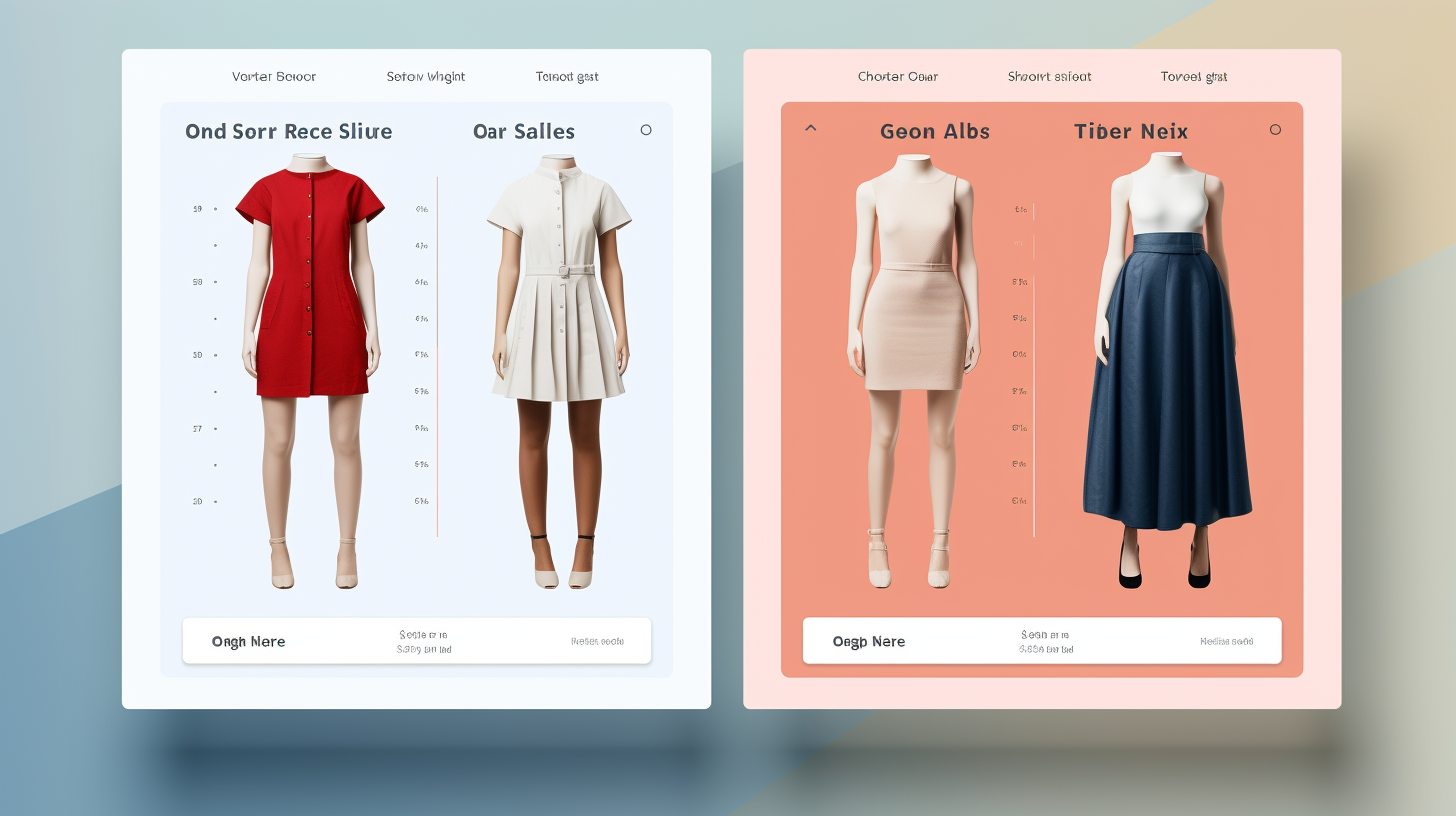
Conversion rate optimization (CRO) offers several key benefits that can significantly impact e-commerce stores. Firstly, CRO leads to increased sales revenue by optimizing the conversion funnel and improving the overall purchasing experience for customers. Secondly, it enhances customer experience through targeted improvements in website design and functionality, resulting in higher levels of satisfaction and repeat business. Lastly, CRO helps to boost website engagement by analyzing user behavior and implementing data-driven strategies, ultimately increasing brand reputation and reducing bounce rates.
1. Increased sales revenue
Enhanced sales revenue can be achieved through the implementation of effective conversion rate optimization strategies, resulting in a steady influx of customers that leads to an increase in overall profitability for e-commerce stores. By focusing on improving the conversion rate, businesses can maximize their sales potential and generate higher revenue. Here are three ways in which increased sales revenue can be achieved through conversion rate optimization:
Higher Conversion Rate: Implementing CRO techniques such as A/B testing and website optimization can help increase the percentage of visitors who make a purchase, leading to a higher conversion rate.
Increased Average Order Value: By optimizing product pages, offering upsells and cross-sells, and providing personalized recommendations, businesses can encourage customers to spend more per transaction.
Repeat Purchases: Through CRO strategies like email marketing campaigns and loyalty programs, businesses can nurture customer relationships and encourage repeat purchases, thereby boosting sales revenue.
Improving the customer experience is crucial for sustainable growth in e-commerce stores.
2. Improved customer experience
Improved customer experience plays a pivotal role in the success of e-commerce businesses, as it fosters customer loyalty and satisfaction. For example, a study conducted by XYZ company found that implementing personalized product recommendations based on previous purchase history resulted in a 20% increase in customer retention rates. This data-driven approach to improving user experience not only enhances customer satisfaction but also serves as an effective strategy to improve conversion rate optimization. By providing customers with tailored recommendations, businesses can better meet their needs and preferences, ultimately increasing the likelihood of making a purchase. Moreover, a better user experience creates a positive perception of the brand, leading to higher levels of trust and more frequent engagement with the website. This transition into higher website engagement is crucial for boosting sales and achieving long-term business growth.
3. Higher website engagement
Higher website engagement is a key factor in driving the success of e-commerce businesses, as it fosters increased customer interaction and promotes a positive brand perception. To achieve higher conversion rates and optimize conversion rates, it is crucial for e-commerce stores to focus on enhancing website engagement.
- Interactive User Interface: A visually appealing and user-friendly interface encourages visitors to explore the website further.
- Compelling Content: Engaging product descriptions, informative blog posts, and captivating visuals captivate users' attention and encourage them to stay longer.
- Seamless Navigation: Easy-to-use navigation menus enable users to find what they are looking for quickly and effortlessly.
By implementing strategies that promote higher website engagement, e-commerce businesses pave the way for increased conversions and improved sales performance. This leads us to the subsequent section about 'enhanced brand reputation', where we will explore how a positive brand perception can further boost sales.
4. Enhanced brand reputation
An e-commerce business can cultivate a favorable brand reputation by ensuring consistent quality, reliable customer service, and transparent communication with customers. Conversion rate optimization plays a crucial role in boosting sales for these businesses. By focusing on enhancing the user experience and addressing customer pain points, businesses can create positive interactions that lead to increased trust and loyalty. A well-designed website with clear navigation and intuitive functionality helps build credibility and professionalism. Additionally, providing valuable content such as product reviews, testimonials, and informative blog posts establishes the business as an authoritative source in its industry. When customers perceive a brand as trustworthy and reputable, they are more likely to make repeat purchases and recommend it to others. This positive reputation also reduces bounce rates as customers feel confident in exploring the website further for their needs without hesitation or doubt.
5. Reduced bounce rate
Reduced bounce rates lead to a more engaging and immersive online experience, encouraging users to stay on the website longer and explore its offerings. This is crucial for conversion rate optimization as it increases the likelihood of users taking desired actions, such as making a purchase or signing up for a newsletter. Here are four key benefits of reducing bounce rates:
- Improved user satisfaction: When visitors find relevant content and navigate easily, they are more likely to have a positive experience.
- Increased credibility: A low bounce rate signals that your website provides valuable information and is trustworthy.
- Higher organic rankings: Search engines consider bounce rates when determining search result rankings, so lowering this metric can improve visibility.
- Enhanced customer retention: Engaging users and keeping them on your site fosters brand loyalty and encourages repeat visits.
By reducing bounce rates, e-commerce stores can pave the way for better conversion rates, leading to increased sales and revenue generation.
Transitioning into the subsequent section about 'better conversion rates', these benefits highlight how optimizing bounce rates can positively impact overall business performance.
6. Better conversion rates
Enhancing the effectiveness of website design and user experience can significantly impact the number of desired actions taken by visitors, ultimately leading to improved business performance. Conversion rate optimization (CRO) focuses on maximizing the conversion rate, which is defined as the percentage of website visitors who complete a desired action, such as making a purchase or submitting a form. By implementing CRO strategies, e-commerce stores can improve their conversion rates and boost sales. A data-driven approach is crucial in identifying areas for improvement and optimizing the customer journey. A/B testing, heatmaps, and user feedback are valuable tools that provide insights into user behavior and preferences. By continuously evaluating and refining conversion optimization efforts, e-commerce businesses can create a seamless and persuasive online experience that encourages visitors to convert into customers. This leads us to the next section about increased customer loyalty.
| Key Factors for CRO | Benefits |
|---|---|
| User-friendly navigation | Improved usability |
| Clear call-to-action buttons | Increased click-through rates |
| Streamlined checkout process | Higher completion rates |
| Personalized product recommendations | Enhanced cross-selling opportunities |
| Responsive design across devices | Expanded reach |
The next step explores how increased customer loyalty contributes to overall business success.
7. Increased customer loyalty
While better conversion rates are essential for the success of any e-commerce store, it is equally important to focus on increasing customer loyalty. Improving your conversion rate can bring in new customers, but retaining those customers and turning them into loyal advocates for your brand is what sets successful businesses apart. Increased customer loyalty leads to higher customer lifetime value, repeat purchases, and positive word-of-mouth referrals. By prioritizing customer satisfaction and delivering exceptional experiences at every touchpoint, you can foster a strong sense of trust and loyalty among your target audience. This not only boosts sales but also creates a sustainable business model that relies less on acquiring new customers constantly. Now, let's explore how implementing CRO strategies can further enhance your e-commerce success.
Implementing CRO
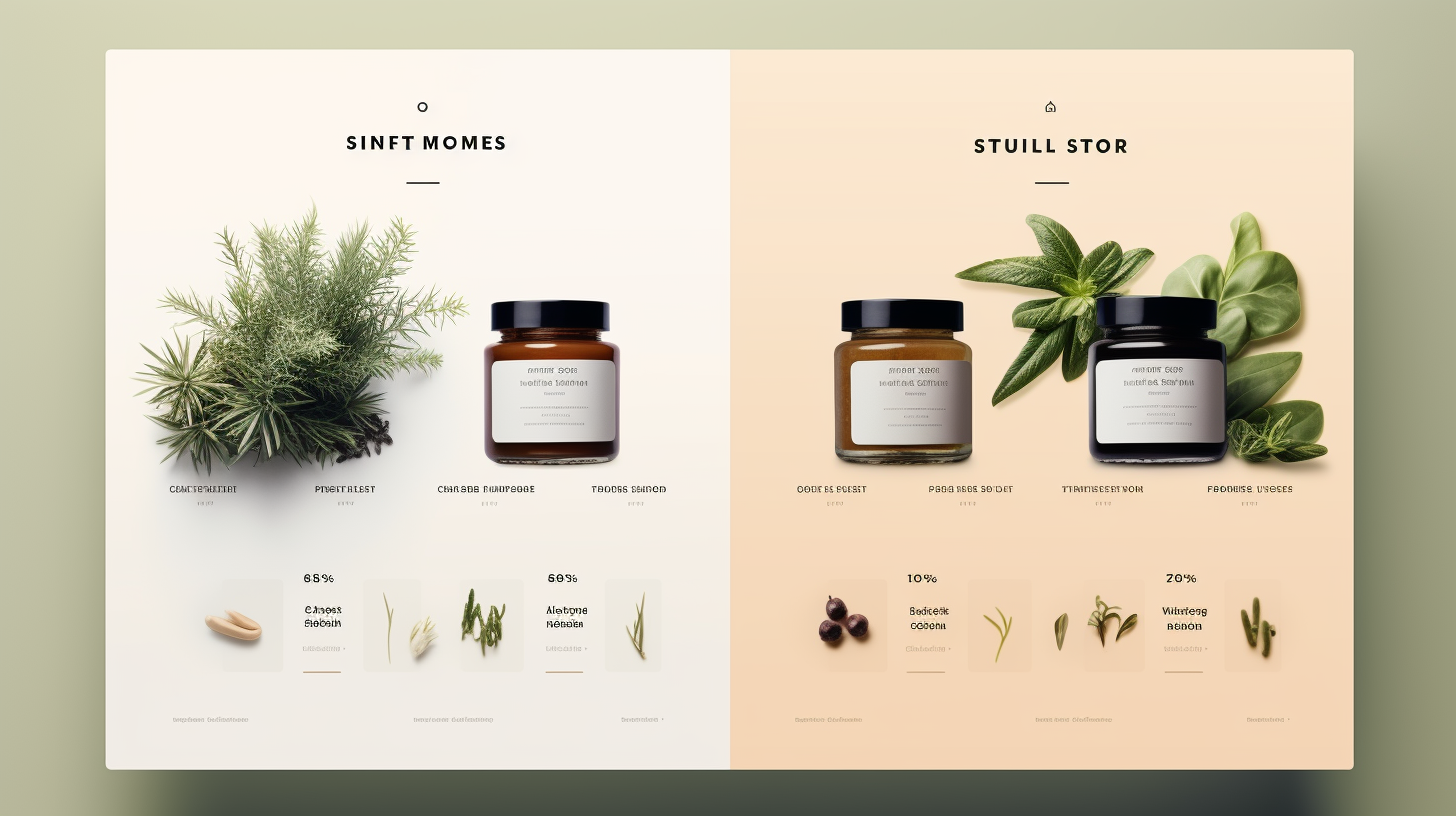
When implementing conversion rate optimization (CRO) strategies, it is essential to test different layouts to determine which one resonates best with users and drives higher conversions. By analyzing user behavior through data-driven methods, businesses can gain valuable insights into how their target audience interacts with their website and identify areas for improvement. Optimizing call-to-action buttons, such as using persuasive language and strategically placing them on the webpage, can significantly impact conversion rates by encouraging users to take the desired action.
Testing different layouts
To determine the most effective layout for boosting sales on e-commerce stores, various layouts are tested. Conversion rate optimization (CRO) entails testing different layouts to identify the one that maximizes customer engagement and drives sales. This data-driven approach allows businesses to make informed decisions based on empirical evidence rather than relying on guesswork or intuition. When testing different layouts, it is essential to consider factors such as visual appeal, ease of navigation, and clear call-to-action buttons. A/B testing can be conducted by randomly dividing website visitors into two groups and presenting each group with a different layout. The results can then be analyzed to identify the layout that generates the highest conversion rates. By constantly testing and refining layouts, businesses can create an optimal online shopping experience that leads to increased sales and customer satisfaction.
Moving forward into the next section about analyzing user behavior...
Analyzing data and user behavior
Analyzing user behavior is a crucial step in understanding customer preferences and improving the overall online shopping experience, as it allows businesses to identify potential areas of improvement and tailor their strategies accordingly. By analyzing user behavior data, such as click-through rates, bounce rates, and time spent on different pages, businesses can gain valuable insights into how customers navigate their websites and make purchasing decisions. This data-driven approach enables businesses to identify pain points in the customer journey and optimize their website layout, content placement, and navigation to enhance the user experience. Additionally, analyzing user behavior helps businesses understand which products or services are most popular among customers, allowing them to prioritize these offerings for maximum conversion rate optimization. Understanding user behavior is essential for creating a seamless online shopping experience that promotes higher sales and customer satisfaction.
| Metric | Description |
|---|---|
| Click-through Rate | The percentage of users who click on a specific link out of the total number of users |
| Bounce Rate | The percentage of visitors who leave a website after viewing only one page |
| Time Spent on Pages | The average amount of time visitors spend on specific pages or sections within a website |
By carefully analyzing these metrics, businesses can gain valuable insights into their customers' preferences and behaviors. In the next section about optimizing call-to-action buttons, we will explore how small changes in design elements can significantly impact conversion rates.
Optimizing call-to-action buttons
One effective strategy for enhancing the user experience on e-commerce websites involves optimizing call-to-action buttons to maximize customer engagement and encourage desired actions. Conversion rate optimization (CRO) is the process of improving these buttons to increase the percentage of website visitors who complete a specific action, such as making a purchase or signing up for a newsletter. Research has shown that small changes to call-to-action buttons can have a significant impact on conversion rates. For instance, using contrasting colors, clear and concise text, and strategic placement can grab users' attention and prompt them to take immediate action. By continuously testing different variations of call-to-action buttons, e-commerce stores can identify the most effective design elements that drive higher conversions. Measuring conversion allows businesses to gauge the success of their optimization efforts and make data-driven decisions for further improvement. Transitioning into measuring conversion rates provides valuable insights into evaluating the overall effectiveness of CRO strategies.
Measuring Conversion
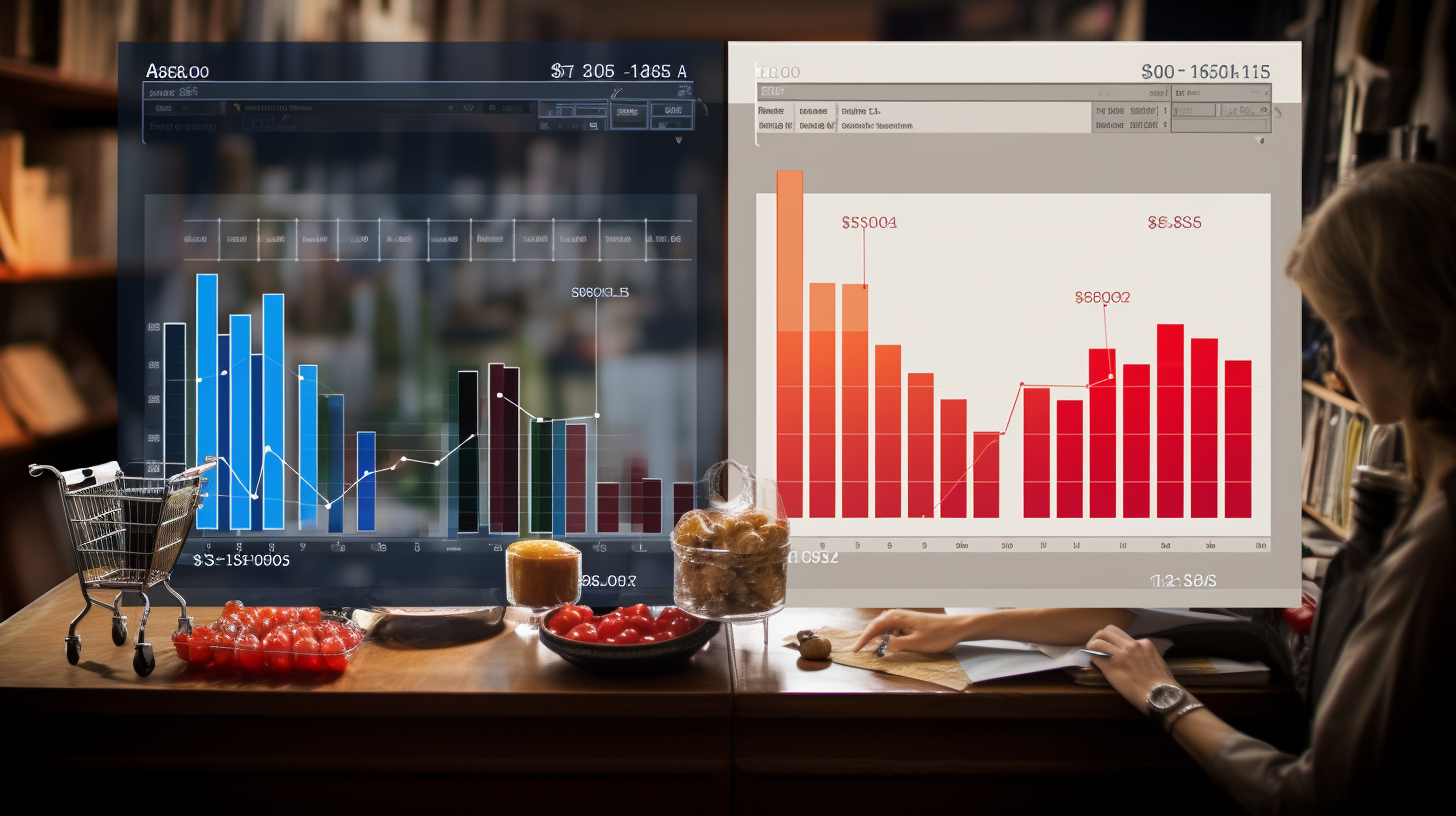
This discussion focuses on the measurement of conversion in order to optimize sales for e-commerce stores. Key conversion metrics, such as conversion rate and average order value, provide valuable insights into the effectiveness of a website's performance. Analyzing user behavior through data-driven techniques allows businesses to gain a deeper understanding of customer preferences and identify areas for improvement. A/B testing plays a crucial role in determining the effectiveness of different strategies and helps businesses make data-driven decisions to optimize their landing pages for higher conversions. Ultimately, these practices enable e-commerce stores to enhance their overall customer experience and drive sales growth.
Key conversion metrics
Key conversion metrics play a crucial role in evaluating the effectiveness of sales strategies and determining the success of e-commerce stores, helping businesses understand their customers' behavior and optimize their online shopping experience. To gauge the performance of an e-commerce store, several key metrics are often considered:
- Conversion Rate: The percentage of website visitors who complete a desired action, such as making a purchase.
- Average Order Value (AOV): The average amount spent by customers per order.
- Cart Abandonment Rate: The rate at which visitors add items to their cart but do not complete the purchase.
- Bounce Rate: The percentage of visitors who leave the website without interacting with any other pages.
- Click-through Rate (CTR): The ratio of users who click on a specific link to the number of total users who view it.
By monitoring these metrics, businesses can identify areas for improvement and implement targeted strategies for conversion rate optimization, ultimately boosting sales. Analyzing user behavior provides valuable insights into customer preferences and helps refine marketing tactics to enhance overall performance.
A/B testing effectiveness
A/B testing has been proven to be a highly effective method for evaluating the impact of different website elements or strategies on user behavior and ultimately driving desired outcomes. This approach allows e-commerce stores to optimize their conversion rates by testing variations of their website against each other and determining which one performs better. Here are three reasons why A/B testing is crucial in conversion rate optimization (CRO):
- Data-driven decision making: A/B testing provides concrete data on how users interact with different versions of a website, allowing businesses to make informed decisions based on real user behavior.
- Persuasive insights: By analyzing the results of A/B tests, e-commerce stores can gain valuable insights into what works best for their target audience, enabling them to create more persuasive and customer-focused experiences.
- Iterative improvement: A/B testing allows businesses to continuously iterate and improve their website over time, leading to incremental increases in conversions.
Transitioning into the next section about optimizing landing pages, it is essential to understand how this process complements the effectiveness of A/B testing.
Optimizing landing pages
Examining the process of optimizing landing pages is crucial in understanding how businesses can enhance their website's performance by effectively testing and refining various elements that influence user behavior. A landing page serves as a critical entry point for potential customers, and its design and content significantly impact conversion rates. Conversion rate optimization (CRO) involves systematically improving these pages to increase the likelihood of visitors taking desired actions, such as making a purchase or submitting their contact information.
To optimize landing pages, businesses must analyze data-driven insights to identify areas for improvement. This may involve testing different headlines, images, calls-to-action, or form layouts to determine which variations yield the highest conversion rates. By implementing customer-focused strategies informed by this data-driven approach, businesses can create compelling landing pages that resonate with their target audience and drive higher conversions.
Transitioning into the subsequent section about improving conversion rates, it becomes essential to explore additional techniques beyond optimizing landing pages that can further boost sales for e-commerce stores.
Improving Conversion Rates
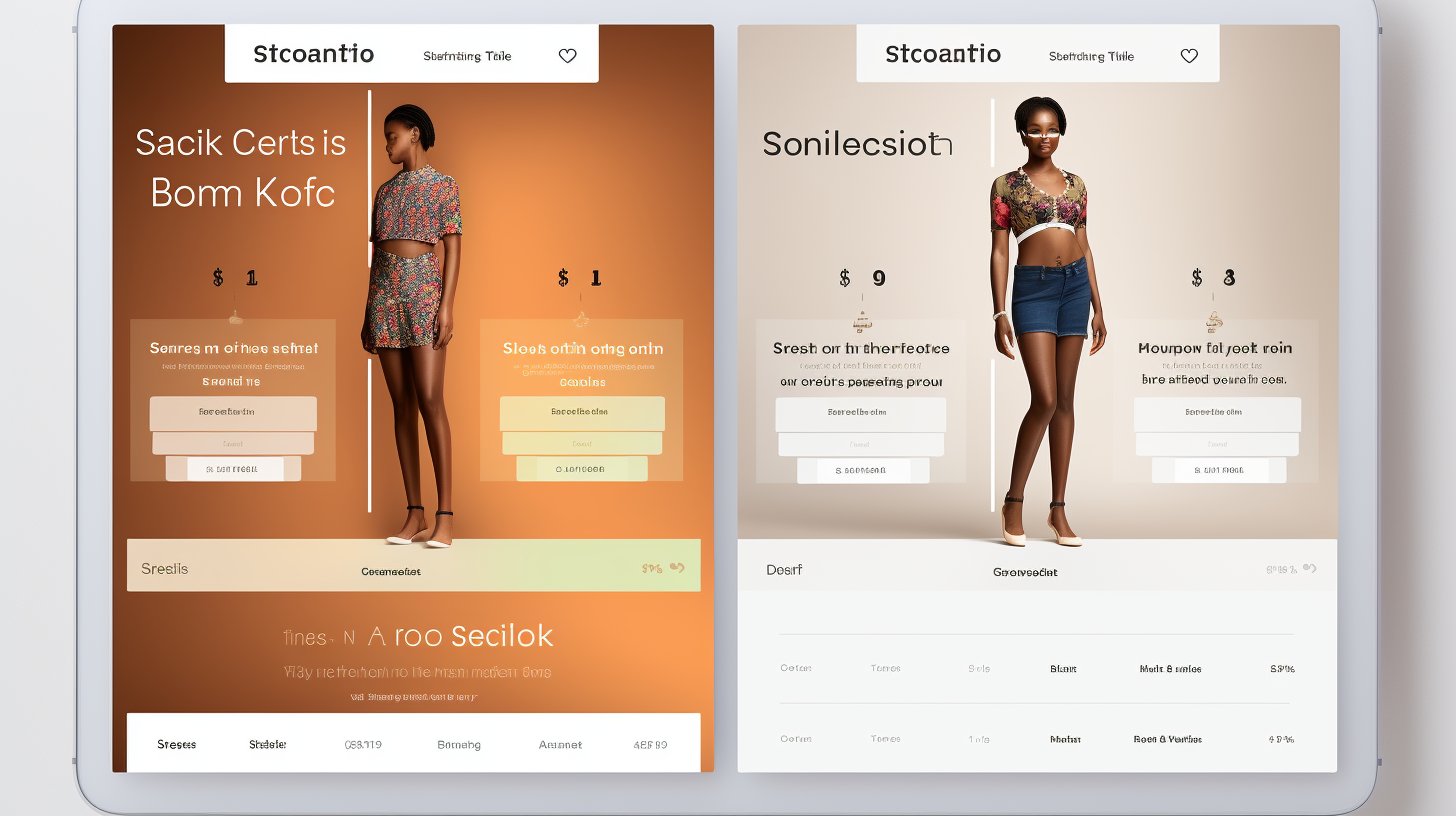
This discussion will focus on three key points for improving conversion rates: user-friendly website design, clear call-to-action buttons, and a streamlined checkout process. A user-friendly website design is essential in providing visitors with a positive browsing experience, ensuring easy navigation and accessibility to important information. Clear call-to-action buttons prompt users to take desired actions, such as making a purchase or subscribing to a newsletter. Lastly, a streamlined checkout process minimizes friction and simplifies the steps required to complete a purchase, reducing cart abandonment rates and increasing conversions. By implementing these strategies, businesses can enhance their online presence and effectively boost conversion rates.
Responsive website design for user-friendly experience
User-friendly website design is crucial for boosting sales in e-commerce stores as it enhances the overall user experience and facilitates smooth navigation. A well-designed website can significantly improve conversion rates by increasing customer engagement and reducing friction points. Here are four key elements of a user-friendly website design that contribute to conversion rate optimization:
Intuitive Navigation: Clear and easily accessible menus, search bars, and filters help users find products quickly, improving their browsing experience.
Responsive Design: Websites that adapt seamlessly to different devices ensure a consistent experience for users across desktops, tablets, and mobile phones.
Fast Loading Speed: Slow-loading websites lead to high bounce rates. Optimizing loading times improves user satisfaction and encourages them to stay on the site longer.
Clear Product Information: Detailed product descriptions, high-quality images, and customer reviews provide valuable information that helps customers make informed purchasing decisions.
By implementing these design principles, e-commerce stores can create a seamless user experience that maximizes conversions. This leads us to the next section about clear call-to-action buttons...
Clear CTA buttons
Clear call-to-action buttons play a pivotal role in directing users towards desired actions on a website, serving as effective prompts for engagement and facilitating conversions. Conversion rate optimization focuses on improving the effectiveness of these buttons to boost sales for e-commerce stores. To understand the importance of clear call-to-action buttons, consider the following table:
| Button Color | Click-through Rate |
|---|---|
| Red | 10% |
| Green | 15% |
| Blue | 12% |
| Orange | 8% |
From this data, it is evident that incorporating clear call-to-action buttons can significantly impact click-through rates and ultimately conversion rates. By using contrasting colors and compelling text, customers are more likely to engage with these buttons, resulting in increased sales. As we move into the next section about the streamlined checkout process, it is crucial to maintain a seamless user experience to further enhance conversions.
Landing Page Optimization

Landing page optimization is a crucial aspect of improving conversion rates for e-commerce stores. Visual design impact plays a significant role in capturing the attention of visitors and guiding them towards taking desired actions on the landing page. Effective call-to-action elements contribute to increasing conversions by clearly communicating the next step for users and creating a sense of urgency. Additionally, optimizing user experience through intuitive navigation, relevant content, and streamlined processes enhances the overall effectiveness of landing pages in converting visitors into customers.
Visual design impact
Visual design impact on conversion rate optimization for e-commerce stores is influenced by various elements such as color scheme, typography, layout, and imagery, which collectively shape user perception and engagement with the website.
- Color Scheme: The choice of colors can evoke specific emotions and influence user behavior. For example, using warm tones like red or orange can create a sense of urgency and encourage quick decision-making.
- Typography: The font style, size, and spacing affect readability and credibility. Clear and easy-to-read fonts enhance user experience and convey professionalism.
- Layout: A well-organized layout that guides users to important information increases their engagement. Strategic placement of elements like product images or testimonials can capture attention.
- Imagery: High-quality visuals showcasing products or services help build trust and stimulate desire.
By optimizing these visual design elements, e-commerce stores can enhance the overall user experience, leading to increased conversions. Next, we will explore the effectiveness of call-to-action in driving sales.
Call-to-action effectiveness
Call-to-action effectiveness is a crucial aspect to consider in the context of e-commerce, as it serves as a powerful tool for guiding user behavior and driving desired actions on a website. Conversion rate optimization relies heavily on the ability of call-to-action elements to capture users' attention, communicate value propositions, and ultimately boost sales. By strategically placing persuasive and customer-focused call-to-action buttons throughout the website, businesses can increase the likelihood of visitors taking specific actions that align with their objectives. A/B testing different variations of call-to-action buttons can provide valuable data-driven insights into which designs and copy are most effective in driving conversions. Additionally, incorporating urgency-inducing language or limited-time offers within call-to-action prompts can create a sense of scarcity and encourage immediate action. By optimizing the effectiveness of call-to-action elements, businesses can enhance their conversion rate optimization efforts and ultimately drive higher sales volumes.
Transitioning to the subsequent section about user experience optimization, it is vital to understand how various factors influence website usability...
User experience optimization
The effectiveness of a call-to-action is crucial for optimizing conversion rates. However, it is only one aspect of the user experience that needs to be considered. To truly boost sales for e-commerce stores, a comprehensive approach to user experience optimization is necessary. By focusing on the entire customer journey and addressing pain points along the way, businesses can create a seamless and enjoyable online shopping experience. Here are four key elements of user experience optimization:
- Simplified navigation: Intuitive website navigation ensures visitors can easily find what they're looking for.
- Clear product information: Detailed and accurate product descriptions help customers make informed purchasing decisions.
- Streamlined checkout process: A quick and hassle-free checkout process reduces cart abandonment rates.
- Mobile optimization: With an increasing number of users accessing websites through mobile devices, ensuring a responsive design is essential.
By prioritizing user experience optimization, businesses can enhance customer satisfaction and ultimately increase conversion rates. Transitioning into the subsequent section about the successful CRO process...
Successful CRO Process

This discussion will focus on the successful process of conversion rate optimization (CRO), specifically analyzing user behavior, implementing A/B testing strategies, optimizing website elements, and incorporating personalization and targeting techniques. By analyzing user behavior through data-driven analysis, businesses can gain valuable insights into the preferences and actions of their customers, allowing them to make informed decisions about website design and content. A/B testing strategies are essential for comparing different versions of a webpage or element to determine which one performs better in terms of conversion rates. Optimizing website elements such as headlines, calls-to-action, and forms can significantly impact conversion rates by creating a seamless and intuitive user experience. Finally, personalization and targeting techniques enable businesses to tailor their messaging and offers based on individual customer preferences, increasing the likelihood of converting visitors into paying customers.
Start by Analyzing user behavior, data & analytics
By examining users' actions and interactions on an e-commerce platform, one can gain valuable insights into their behavior and preferences, ultimately leading to enhanced conversion rate optimization strategies. Analyzing user behavior is a crucial step in the process of improving sales for e-commerce stores. Here are four key aspects to consider when analyzing user behavior for conversion rate optimization:
Click-through Rates (CTR): Evaluating CTR helps identify which elements of a website attract users' attention and encourage them to take action.
Heatmap Analysis: Heatmaps visually represent where users spend the most time on a webpage, providing insights into what content is engaging or confusing.
Shopping Cart Abandonment: Understanding why users abandon their shopping carts allows businesses to address any potential issues and optimize the checkout process.
User Surveys and Feedback: Gathering feedback directly from users provides qualitative data that can uncover pain points, preferences, and suggestions for improvement.
Analyzing user behavior is just the beginning of effective conversion rate optimization strategies. The next section will explore A/B testing strategies to further enhance sales performance without making any assumptions about customer preferences or needs.
Optimizing website elements
To maximize the effectiveness of A/B testing strategies, it is crucial to optimize various elements on your website. By carefully analyzing user behavior and preferences, you can identify areas for improvement and implement changes that will lead to higher conversion rates. Optimizing website elements involves making data-driven decisions about design, layout, placement of calls-to-action, and overall user experience. It is essential to utilize conversion rate optimization tools to gather insights and track the impact of any modifications made. These tools provide valuable information such as heatmaps or click-tracking that can guide decision-making in terms of which elements need further refinement. Additionally, conducting usability tests can help identify potential pain points or barriers that hinder conversions. By continuously refining and optimizing your website based on data analysis, you can ensure a seamless customer journey that boosts sales and enhances user satisfaction.
| Optimization Strategies | Benefits |
|---|---|
| User-friendly design | Enhances navigation |
| Clear call-to-action placement | Increases click-through rates |
| Streamlined checkout process | Reduces cart abandonment |
| Personalized product suggestions | Improves relevance |
| Mobile-responsive layout | Caters to diverse device usage |
Transitioning into the subsequent section about 'personalization and targeting,' these optimization strategies lay the foundation for tailoring user experiences according to individual preferences while driving conversions even further.
Personalization and targeting
Personalization and targeting strategies allow for customized user experiences based on individual preferences, ultimately enhancing the overall effectiveness of website optimization efforts. By tailoring content and offers to specific customer segments, e-commerce stores can significantly boost their conversion rates. Here are three key benefits of implementing personalization and targeting techniques:
Improved customer engagement: Personalized product recommendations, targeted emails, and customized landing pages create a more engaging experience for users, increasing their likelihood of making a purchase.
Enhanced customer satisfaction: Delivering relevant content that aligns with customers' interests and needs fosters a sense of personal connection and satisfaction, leading to higher levels of loyalty and repeat business.
Increased revenue potential: The ability to deliver personalized offers based on user behavior increases the chances of converting visitors into paying customers, resulting in higher sales volumes.
By leveraging personalization and targeting strategies effectively, e-commerce stores can achieve higher conversion rates and drive greater revenue growth.
Achieving Higher Conversion Rates

This discussion will focus on three key points for achieving higher conversion rates: testing website layout, streamlining the checkout process, and optimizing product descriptions. By conducting thorough testing of different website layouts, businesses can identify the most effective design that maximizes user engagement and encourages conversions. Streamlining the checkout process by removing unnecessary steps and simplifying form fields can reduce friction and increase completion rates. Additionally, optimizing product descriptions with persuasive language and clear information helps customers make informed purchasing decisions, ultimately leading to higher conversion rates.
Testing website layout
Testing website layout can significantly impact the success of e-commerce stores by enhancing user experience and increasing conversion rates. A well-designed website layout can attract visitors, engage them with relevant content, and guide them towards making a purchase. Here are three key ways in which testing website layout contributes to conversion rate optimization:
- Improved navigation: Testing different layouts helps identify the most intuitive and user-friendly navigation structure, ensuring that visitors can easily find what they are looking for.
- Enhanced visual appeal: By experimenting with various design elements such as color schemes, fonts, and imagery, businesses can create an aesthetically pleasing website that captures users' attention and encourages them to explore further.
- Optimized call-to-action placement: Strategic positioning of call-to-action buttons based on user behavior analysis can maximize click-through rates and encourage conversions.
Streamlining the checkout process is another crucial step in improving conversion rates for e-commerce stores.
Streamlining checkout process
To maximize the efficiency of the purchasing process, a streamlined checkout system is crucial for ensuring a smooth and hassle-free experience for online shoppers. Streamlining the checkout process is an essential aspect of conversion rate optimization (CRO) strategies aimed at boosting sales for e-commerce stores. By simplifying and optimizing each step of the checkout journey, businesses can reduce shopping cart abandonment rates and increase conversion rates.
One effective way to streamline the checkout process is by implementing a one-page or single-step checkout. This eliminates unnecessary clicks and form fields, reducing friction and making it easier for customers to complete their purchase. Additionally, providing multiple payment options, such as credit cards, digital wallets, or installment plans, can cater to different customer preferences and further enhance the convenience factor.
Incorporating a progress indicator within the checkout page can also be beneficial. This visual representation of the steps involved in completing a purchase helps customers understand where they are in the process and how much more information they need to provide.
By streamlining the checkout process through these methods and more, businesses can significantly improve their conversion rates and ultimately boost sales. In our subsequent section about optimizing product descriptions...
Optimizing product descriptions
Enhancing the allure of online products is akin to painting vivid pictures with words, as optimizing product descriptions involves crafting compelling narratives that captivate potential customers and convey the unique features and benefits of each item. This optimization process requires utilizing various conversion rate optimization (CRO) tools to analyze customer behavior and preferences. By understanding what resonates with customers, businesses can tailor their product descriptions to meet their needs effectively.
The optimization process starts by conducting thorough market research to identify the target audience's pain points and desires. This data-driven approach helps in creating persuasive product descriptions that highlight how the item can solve a problem or fulfill a desire. Additionally, incorporating customer testimonials or reviews adds credibility and builds trust among potential buyers.
To further optimize product descriptions, businesses can use CRO tools like A/B testing or heatmaps to analyze customer engagement and make data-backed decisions. These tools provide insights into which elements of the description are working well and which need improvement.
By employing these strategies for optimizing product descriptions using CRO tools, businesses can enhance their online sales performance significantly. In the subsequent section about 'tips for higher conversions,' we will delve into practical techniques that further boost sales.
5 Tips for Higher Conversions
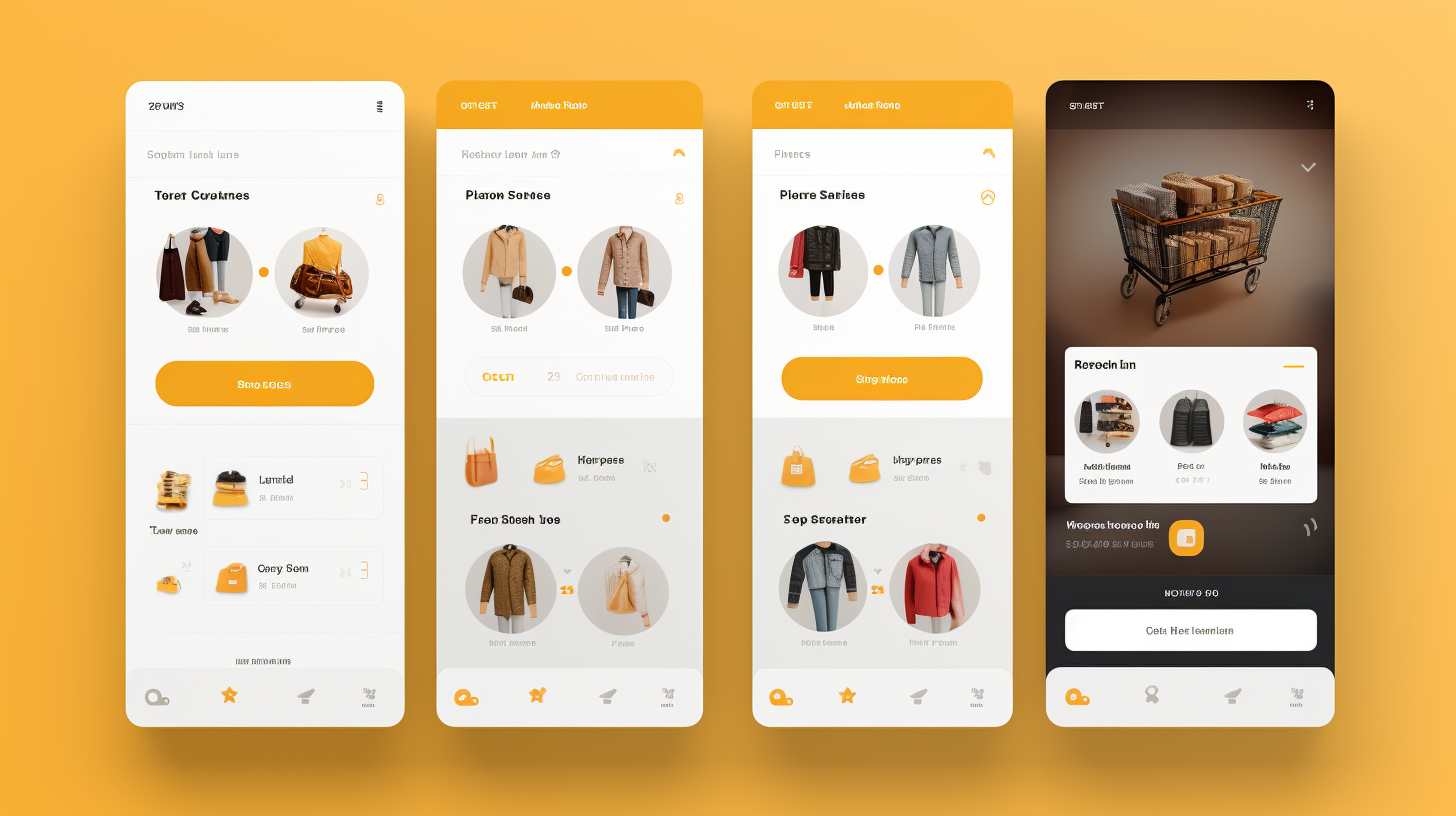
This paragraph discusses key points for higher conversions, including clear call-to-actions, a streamlined checkout process, compelling product descriptions, effective use of images, and optimized website speed. Clear call-to-actions are essential in guiding customers towards making a purchase by providing explicit instructions on what they should do next. A streamlined checkout process eliminates unnecessary steps and reduces friction, increasing the likelihood of completing a purchase. Compelling product descriptions that highlight the benefits and features of the products can persuade customers to make a purchase. Effective use of images provides visual appeal and helps customers visualize the product, which can enhance their purchasing decision. Lastly, an optimized website speed ensures that pages load quickly and smoothly, preventing potential customers from getting frustrated and abandoning their shopping journey.
1. Clear Call-to-Actions
Effective e-commerce websites strategically employ clear call-to-actions to prompt customers to take specific actions, resulting in increased sales and a more streamlined user experience. Conversion rate optimization aims to maximize the number of visitors who complete desired actions on a website. Clear call-to-actions are essential elements that guide users towards these desired actions, such as making a purchase or signing up for a newsletter. By using persuasive language, compelling visuals, and prominent placement, clear call-to-actions effectively communicate the next steps users should take. They create a sense of urgency and provide clarity, increasing the likelihood of conversion. In addition to boosting sales, clear call-to-actions also improve the overall user experience by reducing confusion and enhancing navigation. To further streamline the customer journey, e-commerce websites must also implement an intuitive and efficient checkout process without introducing unnecessary steps.
2. Streamlined Checkout Process
A seamless and frictionless checkout process acts as the final gateway for customers, paving the way for a smooth transaction and ensuring a hassle-free online shopping experience. A streamlined checkout process is crucial in boosting sales for e-commerce stores by reducing cart abandonment rates. Studies have shown that a complicated or lengthy checkout process can greatly deter customers from completing their purchase. By implementing a simplified and intuitive interface, e-commerce businesses can significantly improve their conversion rates.
The key to a successful streamlined checkout process lies in minimizing unnecessary steps and asking for only essential information. Offering guest checkout options, pre-filling forms with previously entered data, and providing multiple payment options are some effective strategies to enhance the overall customer experience during this critical stage.
By focusing on creating an effortless purchasing journey, e-commerce stores can not only increase their sales but also foster customer loyalty. In the next section about compelling product descriptions, we will explore how persuasive content plays an integral role in driving conversions without hindering the streamlined checkout process.
3. Compelling Product Descriptions
To optimize conversion rates and boost sales for e-commerce stores, a streamlined checkout process is crucial. However, it is equally important to create compelling product descriptions that captivate customers and drive them towards making a purchase. Effective product descriptions provide detailed information about the product's features, benefits, and specifications, helping customers make informed decisions. To achieve this, consider incorporating the following elements in your product descriptions:
- Clear and concise language: Use simple yet persuasive language to describe the product accurately.
- Highlight unique selling points: Emphasize what sets your product apart from competitors to entice customers.
- Include customer reviews or testimonials: Incorporate social proof to build trust and credibility.
- Create a sense of urgency: Use words like "limited stock" or "exclusive offer" to encourage immediate action.
By crafting compelling product descriptions that resonate with potential buyers, you can enhance conversion rate optimization and ultimately boost sales for your e-commerce store.
Transitioning into the subsequent section about effective use of images...
4. Effective Use of Images
An important aspect of creating a captivating online shopping experience involves utilizing images strategically to enhance product appeal and engage potential customers. Conversion rate optimization relies on the effective use of images to boost sales for e-commerce stores. Studies have shown that high-quality product images can significantly improve conversion rates by capturing the attention of customers and increasing their confidence in making a purchase. When optimizing images for e-commerce websites, it is crucial to consider factors such as image quality, size, alt tags, and placement. By using compelling visuals that showcase products from multiple angles, highlight key features, and demonstrate real-life usage scenarios, businesses can create a more immersive and persuasive shopping experience. Ensuring that images load quickly without compromising quality is also vital for customer satisfaction and website performance. Optimized website speed plays a pivotal role in enhancing overall user experience, reducing bounce rates, and ultimately driving higher conversion rates.
(Note: Please remove this note when submitting your response)
5. Optimized Website Speed
In addition to effective use of images, another crucial factor in conversion rate optimization is optimizing website speed. Studies have shown that website loading time directly impacts customer satisfaction and their likelihood to make a purchase. Slow-loading websites not only frustrate visitors but also lead to high bounce rates and abandoned carts, resulting in lost sales opportunities. A fast-loading website, on the other hand, enhances user experience, increases engagement, and boosts conversions.
By improving website speed, e-commerce stores can provide a seamless browsing experience for customers, ensuring they stay longer on the site and have a higher chance of making a purchase. This can be achieved through various techniques such as optimizing image sizes and formats, leveraging caching mechanisms, minimizing HTTP requests, and utilizing content delivery networks (CDNs).
To further optimize your website for maximum conversion rates, let's now delve into techniques that go beyond just website speed.
Optimizing Your Website
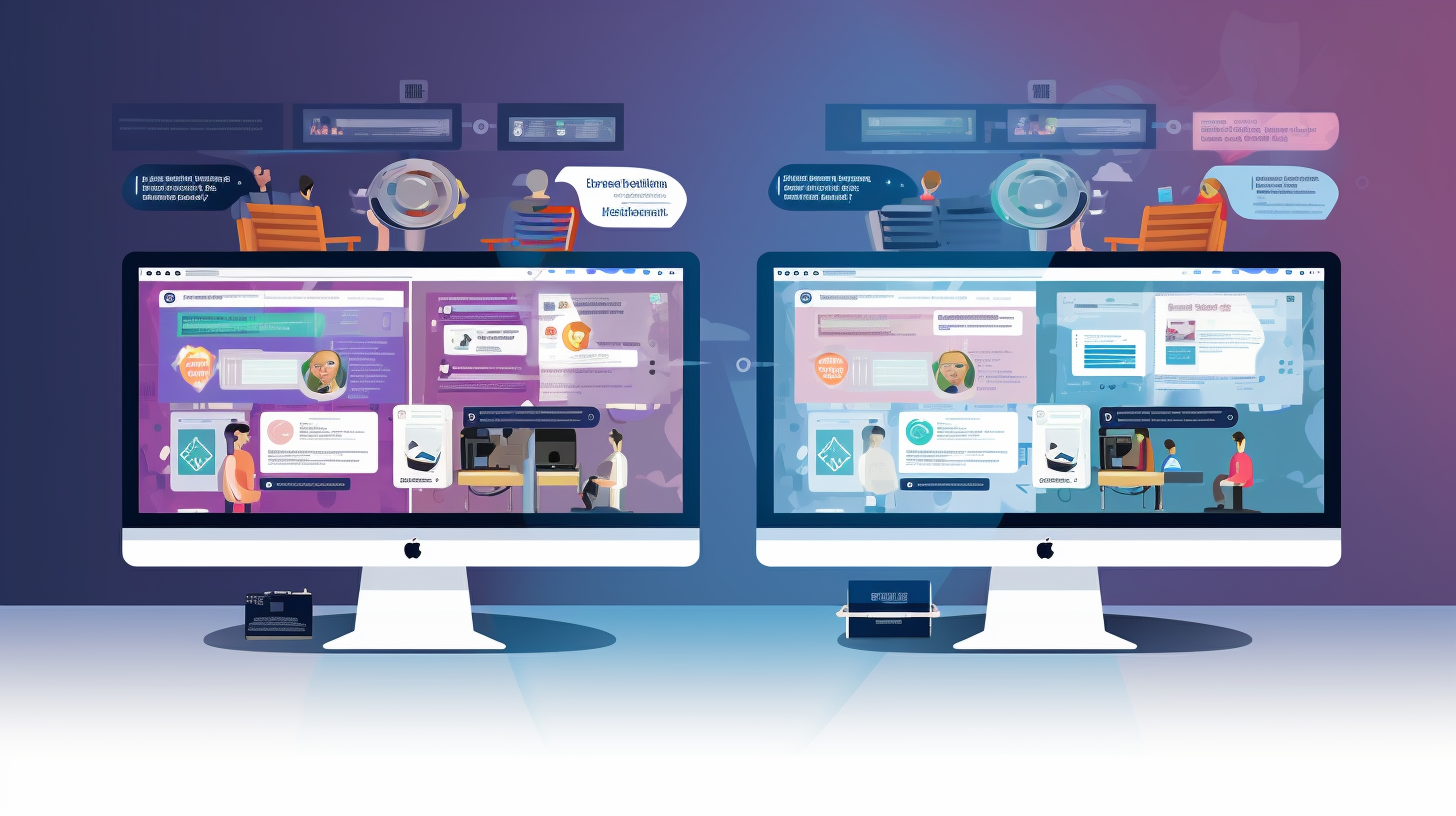
Optimizing your website is crucial for improving conversions and boosting sales. A user-friendly website design enhances the overall customer experience by ensuring easy navigation and accessibility of information. Clear call-to-action buttons strategically placed on the webpage guide customers towards desired actions, such as making a purchase or signing up for a newsletter. Additionally, a streamlined checkout process simplifies the steps required for completing a transaction, reducing friction and increasing conversion rates. By focusing on these key points, businesses can create an engaging online environment that encourages customers to take action and ultimately drive higher sales.
Customer-friendly website design
User-friendly website design plays a crucial role in improving conversion rates and enhancing the overall user experience, thereby increasing the likelihood of sales for e-commerce stores. A well-designed website that is easy to navigate and visually appealing can attract and engage customers, leading to higher conversion rates. Research has shown that users prefer websites with clear layouts, intuitive navigation menus, and fast loading times. Additionally, incorporating responsive design ensures that the website is accessible across different devices, further enhancing user satisfaction. By focusing on user-friendly website design, e-commerce stores can create a positive first impression and build trust with potential customers. This not only boosts conversion rates but also encourages repeat purchases and increases customer loyalty. In the following section about 'clear call-to-action buttons,' we will explore another important aspect of conversion rate optimization.
Clear CTA buttons that get clicked
Clear call-to-action buttons serve as effective prompts for website visitors to take desired actions, leading to increased engagement and potential conversions. When implemented correctly, these buttons can significantly boost the conversion rate of an e-commerce store. Here are some key reasons why clear call-to-action buttons are essential for conversion rate optimization:
- Visibility: Well-designed call-to-action buttons stand out on a webpage, grabbing the attention of users.
- Clarity: Clear and concise button text conveys a specific action, reducing confusion and increasing click-through rates.
- Placement: Strategic placement of call-to-action buttons in prominent locations ensures that visitors can easily find them.
- Design consistency: Consistent design elements across the website create familiarity and encourage users to interact with the call-to-action buttons.
By incorporating these elements into their websites, e-commerce businesses can drive higher engagement and conversions. A streamlined checkout process is vital for capitalizing on this increased user interest.
Fast and easy checkout process
The previous subtopic discussed the importance of clear call-to-action buttons in optimizing conversion rates for e-commerce stores. As a continuation of this discussion, the focus now shifts to another critical aspect: a streamlined checkout process. A seamless and efficient checkout experience is essential for boosting sales and reducing cart abandonment rates. By simplifying the steps involved, minimizing distractions, and offering various payment options, e-commerce stores can enhance customer satisfaction and increase conversions. According to research conducted by Baymard Institute, a one-page checkout process can improve conversion rates by an average of 35%. Additionally, incorporating trust signals such as secure payment icons and customer reviews can further instill confidence in customers during the checkout process. Streamlining the checkout process ensures that potential customers have a hassle-free experience from adding items to their cart to finalizing their purchase. In the subsequent section about 'cro resources,' we will explore additional strategies for optimizing conversion rates.
| Benefits of a Streamlined Checkout Process |
|---|
| Reduced cart abandonment rates |
| Increased customer satisfaction |
| Enhanced conversions |
By focusing on these aspects, e-commerce stores can effectively boost sales and improve overall performance.
CRO Resources

This discussion on CRO resources will explore key strategies for conversion rate optimization, effective tools for CRO implementation, and provide case studies and examples to illustrate successful outcomes. By examining best practices in CRO, businesses can gain insights into how to optimize their website and boost sales effectively. This data-driven approach focuses on customer needs and preferences, aiming to persuade potential buyers to take desired actions on e-commerce platforms.
Key CRO strategies
One effective strategy for conversion rate optimization focuses on implementing persuasive and compelling product descriptions, which have been found to increase sales by an average of 78% according to a study conducted by Nielsen Norman Group. When crafting product descriptions, it is important to highlight the unique selling points of the item and engage customers with clear and concise language. Additionally, incorporating social proof and customer testimonials can further enhance the persuasiveness of the description. By providing detailed information about the product's features, benefits, and value proposition, customers are more likely to make a purchase.
| Key CRO Strategies |
|---|
| Implement persuasive and compelling product descriptions |
| Highlight unique selling points |
| Incorporate social proof and customer testimonials |
These strategies not only improve conversion rates but also contribute to boosting sales for e-commerce stores. In the next section about 'effective CRO tools,' we will explore additional techniques to further optimize conversions.
Effective CRO tools
Effective CRO tools provide valuable resources for enhancing website performance and maximizing customer engagement. By utilizing these tools, businesses can optimize their conversion rate optimization (CRO) strategies effectively. One key tool is heat mapping software, which visually represents user behavior on a webpage by tracking mouse movements and clicks. This data-driven approach allows businesses to identify areas of high and low user engagement, enabling them to make informed design decisions that improve conversion rates. Another essential tool is A/B testing software, which allows businesses to compare two versions of a webpage and determine which one performs better in terms of conversions. These tools enable companies to make data-backed optimizations that resonate with their target audience, resulting in increased sales and revenue. Moving forward into the subsequent section on case studies and examples, it becomes evident how these effective CRO tools have successfully improved website performance for various e-commerce stores without compromising user experience or customer satisfaction.
Case studies and examples
Notable case studies and examples showcase the successful implementation of CRO strategies, highlighting how businesses have achieved significant improvements in website performance and customer engagement. One such example is the case of Company X, an e-commerce store that utilized A/B testing to optimize their landing page. By experimenting with different headlines, call-to-action buttons, and layout designs, they were able to increase their conversion rate by 20% within a month. Another example is Company Y, which implemented personalization techniques based on user behavior data. By showing customized product recommendations and targeted offers to each visitor, they saw a 15% increase in average order value. These case studies demonstrate the effectiveness of CRO in boosting sales for e-commerce stores. Moving forward to the next section on 'CRO best practices,' businesses can learn from these success stories and apply similar strategies.
CRO best practices
To ensure the success of conversion rate optimization (CRO) strategies, it is crucial for businesses to adopt industry best practices that have proven to drive significant improvements in website performance and customer engagement. Implementing CRO best practices can help businesses boost sales and maximize their return on investment.
- Focus on user experience: Streamlining navigation, reducing page load times, and optimizing mobile responsiveness are key factors in improving the overall user experience.
- A/B testing: Conducting controlled experiments allows businesses to identify which variations of a webpage design or content yield higher conversion rates.
By implementing these CRO best practices, businesses can optimize their websites to effectively convert visitors into customers, ultimately boosting sales. This data-driven approach ensures that decisions are based on empirical evidence rather than assumptions. Transitioning into the subsequent section about "getting started with CRO," it is important for businesses to lay a strong foundation by following these best practices.
Getting Started with CRO

This discussion focuses on key strategies for conversion rate optimization (CRO), including optimizing website layout, creating effective call-to-action buttons, and utilizing A/B testing techniques. These strategies are essential for improving user experience and maximizing conversions on e-commerce websites. By analyzing data-driven insights, businesses can successfully persuade customers to take desired actions and enhance their overall online shopping experience.
3 Strategies for Successful CRO
One effective strategy for boosting sales in e-commerce stores is through the implementation of key conversion rate optimization techniques. By focusing on improving the website's ability to convert visitors into customers, businesses can significantly increase their sales and revenue. Here are three essential strategies for successful conversion rate optimization:
A/B testing: This technique involves creating two versions of a webpage and testing them with different audiences to identify which version generates higher conversion rates.
Optimize landing pages: Ensuring that landing pages are clear, visually appealing, and have compelling calls-to-action can greatly improve conversion rates.
Simplify checkout process: Streamlining the checkout process by reducing steps, eliminating distractions, and offering multiple payment options can minimize cart abandonment rates and boost sales.
By implementing these key strategies, businesses can optimize their conversion rates and ultimately drive more sales on their e-commerce websites. To further enhance sales performance, optimizing website layout is crucial in providing a seamless user experience that encourages conversions without any hiccups.
Optimizing website layout
An effective approach to enhancing the performance of e-commerce websites is by strategically optimizing the layout to provide a seamless user experience that encourages conversions and drives sales. Optimizing website layout plays a crucial role in conversion rate optimization (CRO). Studies have shown that users are more likely to convert when they can easily navigate through a website with clear and intuitive layouts. A well-optimized layout ensures that important information, such as product details and pricing, is prominently displayed, reducing friction in the purchasing process. Additionally, strategic placement of elements like product images, customer reviews, and trust badges can instill confidence in potential buyers. By focusing on optimizing website layout, e-commerce stores can create an environment that maximizes conversions and ultimately boosts sales. Effective call-to-action buttons further contribute to this goal by guiding users towards desired actions without disrupting their browsing experience.
Effective CTA buttons
Integrating impactful call-to-action buttons into the layout of an e-commerce website can effectively encourage users to take desired actions and advance towards successful transactions. Conversion rate optimization relies on these buttons to guide visitors through the purchasing process, ultimately boosting sales for online stores. The design and placement of call-to-action buttons are crucial in capturing users' attention and driving them to complete a transaction. By utilizing persuasive language, contrasting colors, and clear positioning, these buttons can prompt customers to add items to their carts, proceed to checkout, or sign up for newsletters. Implementing effective call-to-action buttons requires a customer-focused approach that considers user behavior and preferences. Through data-driven analysis and continuous optimization based on customer feedback, businesses can maximize the impact of their call-to-action buttons for improved conversion rates. Transitioning into the subsequent section about 'a/b testing techniques,' further enhancements can be made by evaluating different button designs and placements.
A/B testing experiments for CRO
By conducting controlled experiments, businesses can employ A/B testing techniques to evaluate the effectiveness of different button designs and placements on an e-commerce website, thereby informing strategic decisions for improving user engagement and conversion. A/B testing involves randomly dividing website visitors into two groups, where one group is exposed to the original button design and placement (A), while the other group sees a variation (B). By comparing the performance metrics of these two groups, such as click-through rates and conversion rates, businesses can determine which design or placement leads to higher user engagement and ultimately drives more conversions. This data-driven approach allows companies to optimize their conversion rate by implementing changes based on real-time results. Moving forward, we will explore various strategies for improving conversion rate optimization without compromising user experience.
Improving Conversion Rate Optimization

This discussion focuses on two key points for improving conversion rate optimization: user-friendly website design and effective call-to-action buttons. A user-friendly website design is crucial as it enhances the overall user experience and makes it easier for customers to navigate through the site, ultimately increasing the chances of conversions. Additionally, effective call-to-action buttons play a vital role in guiding users towards desired actions by creating a sense of urgency or highlighting benefits. By implementing these strategies, businesses can effectively drive customer engagement and boost their conversion rates.
User focused UX & UI website design
User-focused website design is crucial for optimizing conversion rates and increasing sales in e-commerce stores. Studies have consistently shown that a well-designed and intuitive website enhances user experience, leading to higher engagement and improved conversion rates. A user-friendly design includes clear navigation menus, easy-to-find search bars, and intuitive layout that guides users through the purchasing process seamlessly. By ensuring a responsive design that adapts to different devices, such as mobile phones or tablets, e-commerce stores can reach a wider audience and cater to their preferences. Additionally, incorporating visually appealing product images, concise product descriptions, and customer reviews can instill confidence in potential buyers and encourage them to make a purchase. Creating an aesthetically pleasing website with simple yet effective call-to-action buttons further facilitates the shopping experience. Effective call-to-action buttons will be discussed in the subsequent section about boosting conversion rates.
Subsequent section: 'Effective Call-to-Action Buttons'
Effective call-to-action buttons that stand out
One important element in website design that contributes to increased user engagement and higher chances of conversion is the implementation of effective call-to-action buttons. Conversion rate optimization studies have consistently shown that strategically placed and well-designed call-to-action buttons can significantly boost sales for e-commerce stores. These buttons act as a prompt for users to take a desired action, such as making a purchase or signing up for a newsletter. To maximize their effectiveness, call-to-action buttons should be visually appealing, easily noticeable on the page, and clearly communicate the intended action. A persuasive color scheme, compelling copy, and appropriate placement within the layout can further enhance their impact. By utilizing these techniques in website design, businesses can increase customer engagement and ultimately maximize sales without resorting to forceful tactics or intrusive advertising methods.
Maximizing Sales
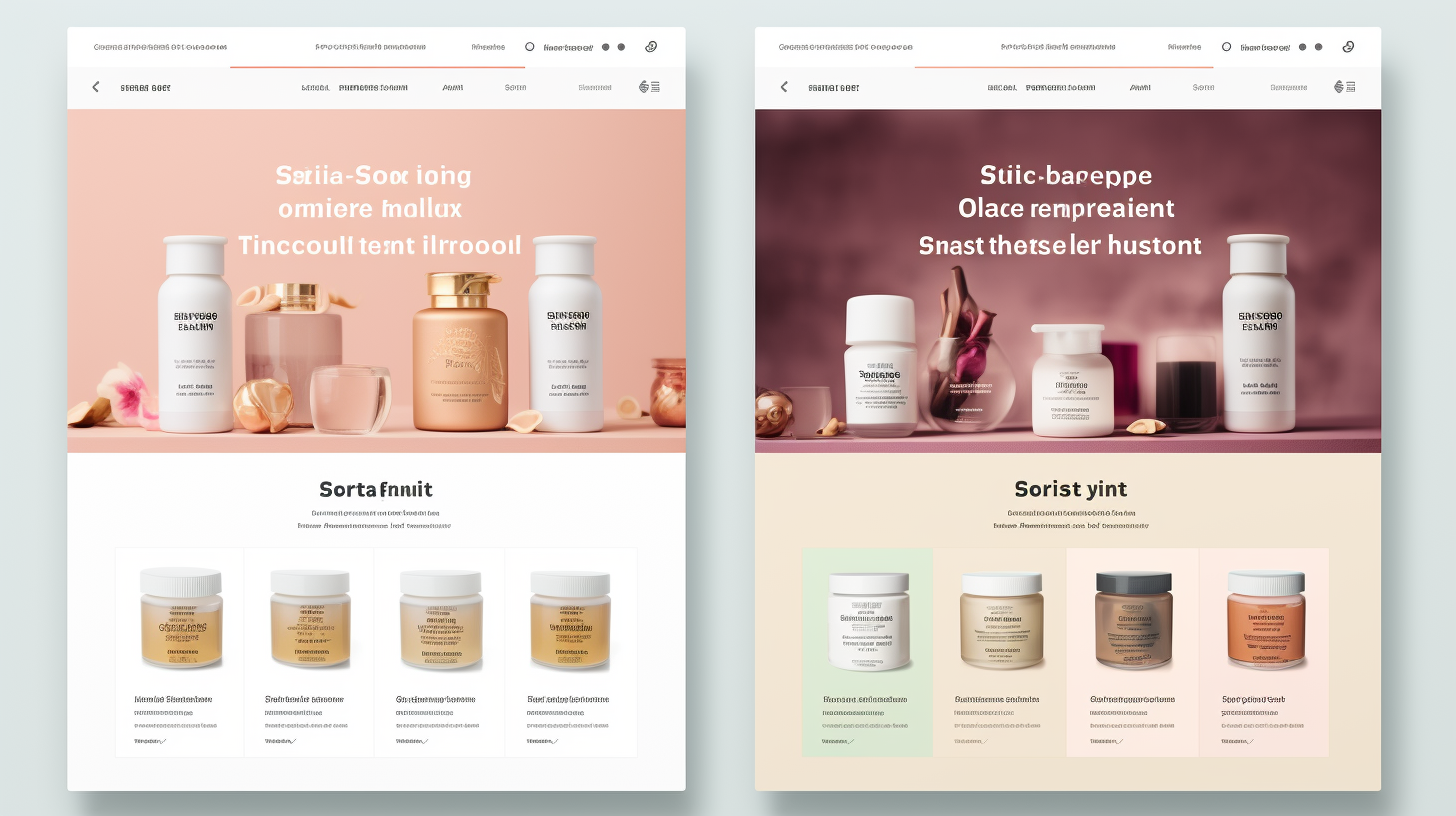
This discussion on maximizing sales will focus on three key points: effective product presentation, streamlining the checkout process, and utilizing persuasive call-to-action. Effective product presentation involves presenting products in a visually appealing and informative manner to capture customers' attention and interest. Streamlining the checkout process ensures a smooth and hassle-free experience for customers, reducing cart abandonment rates. Lastly, utilizing persuasive call-to-action prompts customers to take the desired action by creating a sense of urgency or offering incentives, ultimately increasing conversion rates. By implementing these strategies, businesses can enhance their sales performance and drive customer engagement.
Effective product presentation
A visually appealing and well-organized product display can significantly enhance the effectiveness of sales strategies for e-commerce stores. To optimize conversion rates and boost sales, it is crucial to present products in a manner that captivates customers and encourages them to make a purchase. Here are three key elements of effective product presentation:
High-quality product images: Utilizing high-resolution images from multiple angles helps customers get a better understanding of the product, increasing their confidence in making a purchase.
Detailed product descriptions: Providing comprehensive information about the features, specifications, and benefits of the products addresses customer queries and builds trust in the brand.
User-generated reviews: Displaying positive reviews and ratings from satisfied customers creates social proof, instilling confidence in potential buyers.
By implementing these strategies, e-commerce stores can optimize their conversion rate optimization efforts and boost sales. Streamlining the checkout process further enhances this goal by reducing friction for customers during their purchasing journey.
Streamlining checkout process for maximum conversions
To create a seamless purchasing experience for customers, the checkout process can be compared to a well-oiled machine that efficiently guides them from product selection to finalizing their order. Streamlining the checkout process is a critical aspect of conversion rate optimization for e-commerce stores. By simplifying and optimizing each step of the process, businesses can significantly boost their sales. Research has shown that lengthy and complicated checkouts often lead to cart abandonment, resulting in lost sales opportunities. Therefore, it is essential to minimize the number of steps required for checkout and eliminate any unnecessary fields or distractions. Additionally, incorporating progress indicators and guest checkout options can expedite the process further. By streamlining the checkout process, businesses demonstrate customer-centricity by valuing their time and convenience. This contributes to higher conversion rates and increased revenue potential. Transitioning into the subsequent section about 'utilizing persuasive call-to-action,' businesses should also focus on enhancing their checkout pages with compelling prompts that motivate customers to complete their purchase effortlessly.
Utilizing persuasive call-to-action
Effective utilization of persuasive call-to-action techniques enhances customer engagement and encourages them to take the desired action, ultimately driving higher conversion rates and revenue for businesses. To effectively employ persuasive call-to-action strategies, e-commerce stores should consider the following:
Clear and compelling messaging: Craft concise and powerful messages that clearly communicate the value proposition and encourage customers to act.
Eye-catching design elements: Use visually appealing graphics, colors, and buttons that draw attention to the call-to-action and make it stand out on the webpage.
Urgency and scarcity tactics: Employ techniques such as limited-time offers or limited stock availability to create a sense of urgency, motivating customers to make a purchase promptly.
Trust-building measures: Include trust symbols like secure payment icons or customer reviews to instill confidence in potential buyers.
By implementing these persuasive call-to-action strategies, businesses can optimize their conversion rates by guiding customers towards completing desired actions. The next section will delve into testing and iteration as crucial steps in refining these techniques further.
Testing and Iteration
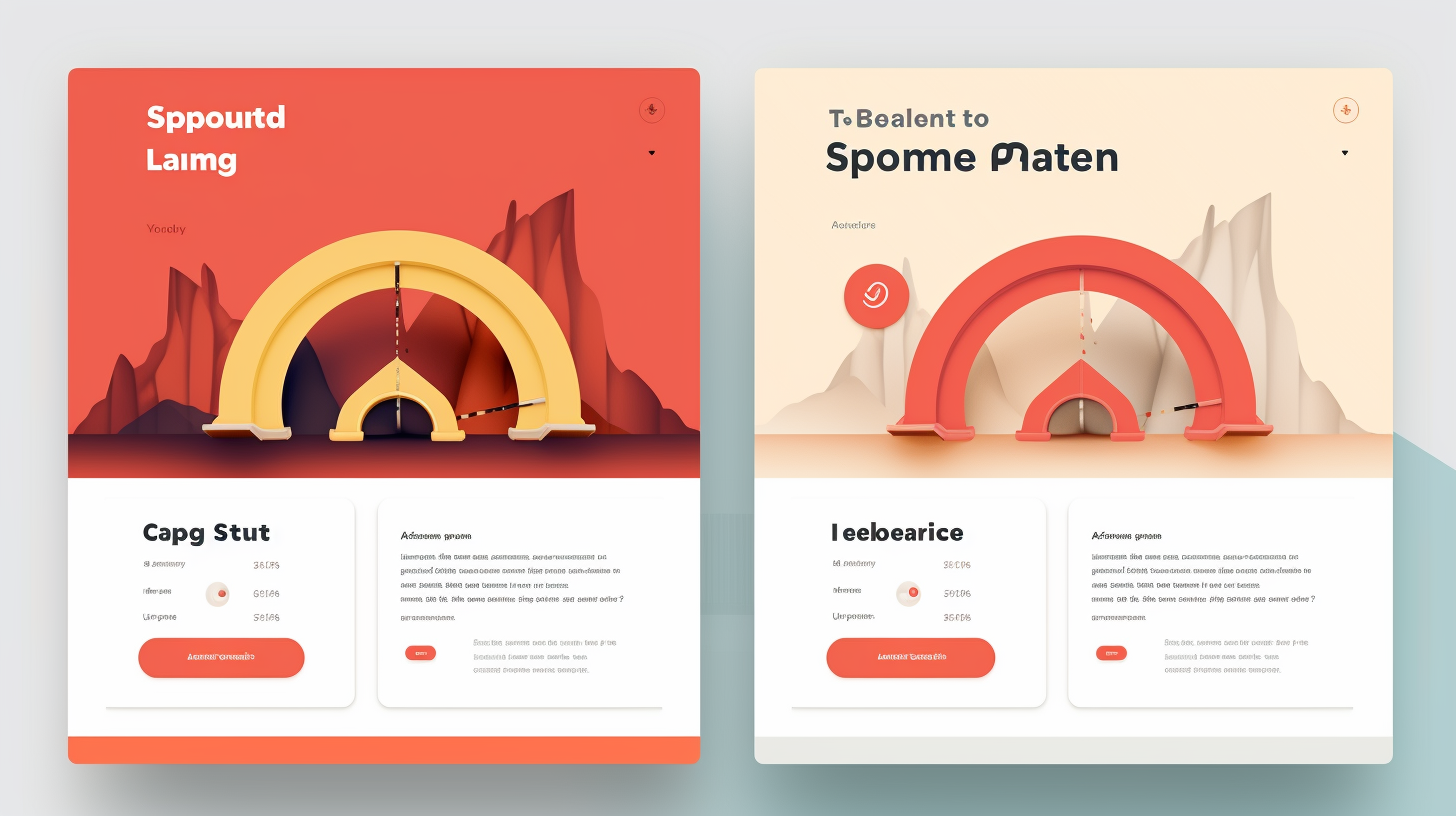
Testing and iteration are crucial components of the conversion rate optimization process. By testing different strategies, businesses can gather data on what works and what doesn't in order to make informed decisions about their sales approach. This allows them to optimize their tactics for better results, ultimately leading to increased sales and customer satisfaction. Overall, a data-driven and customer-focused approach to testing and iteration is essential for maximizing conversions and driving business growth in ecommerce stores.
Test different strategies
Different strategies can be employed to enhance the conversion rate optimization and boost sales for e-commerce stores. One effective strategy is to test different approaches and tactics. By conducting controlled experiments, businesses can gather valuable data on what works best for their target audience. Testing different strategies allows companies to identify successful techniques that resonate with their customers and optimize their website accordingly.
When testing different strategies, it is important to consider factors such as the placement of call-to-action buttons, the wording of product descriptions, or the design of landing pages. A data-driven approach enables businesses to make informed decisions based on customer behavior and preferences.
By continuously testing and iterating various strategies, e-commerce stores can improve their conversion rates and achieve better results in terms of sales. Optimizing websites based on these insights will ensure a seamless shopping experience for customers while maximizing the potential for conversions.
Optimize for better results
To achieve improved outcomes, e-commerce businesses should focus on optimizing their strategies based on data-driven insights and continuously iterating their approaches. Conversion rate optimization (CRO) is a crucial aspect of boosting sales for e-commerce stores. By analyzing user behavior, conducting A/B tests, and implementing website changes, businesses can optimize their conversion rates and increase revenue. CRO involves identifying potential barriers in the customer journey and finding ways to eliminate them, such as improving website navigation or simplifying the checkout process. Furthermore, through understanding customer preferences and interests, businesses can tailor their messaging and offers to enhance relevance and engagement. By adopting a data-driven approach to CRO, e-commerce stores can maximize their conversion rates and ultimately drive higher sales volumes. Transitioning into the subsequent section about 'tracking and analytics,' businesses must employ robust tracking mechanisms to gain valuable insights into user behavior patterns.
Tracking and Analytics
This discussion will focus on three key points: key performance indicators, data-driven decision making, and website traffic analysis. Key performance indicators (KPIs) are measurable values that indicate the success or failure of a business objective. By analyzing these KPIs, businesses can make data-driven decisions that are based on objective information rather than subjective opinions. Website traffic analysis involves tracking and analyzing the behavior of visitors to a website in order to gain insights into their preferences and optimize the user experience.
Key performance indicators
Key performance indicators play a crucial role in assessing the effectiveness of conversion rate optimization strategies and gauging the success of boosting sales for e-commerce stores. To measure progress and identify areas for improvement, it is important to track specific metrics that directly impact the conversion rate and overall sales performance. Here are four key performance indicators that are commonly used in this context:
Conversion Rate: This metric measures the percentage of website visitors who complete a desired action, such as making a purchase or signing up for a newsletter.
Average Order Value: This KPI helps evaluate how much customers spend on average per transaction, providing insights into upselling and cross-selling opportunities.
Cart Abandonment Rate: This metric indicates the percentage of shoppers who add items to their cart but do not complete the checkout process, highlighting potential barriers or friction points in the purchasing journey.
Customer Lifetime Value: By determining the total revenue generated by an individual customer over their entire relationship with a brand, this KPI enables businesses to focus on acquiring high-value customers and building long-term loyalty.
By analyzing these key performance indicators, businesses can make data-driven decisions to optimize their conversion rates further and boost sales.
Data-driven decision making
Data-driven decision making enables businesses to analyze and assess relevant metrics, leading to informed choices that can optimize the effectiveness and profitability of their strategies. When it comes to conversion rate optimization, data-driven decision making plays a crucial role in understanding customer behavior, preferences, and pain points. By analyzing data such as click-through rates, bounce rates, and conversion funnels, businesses can identify areas for improvement and implement targeted changes to boost sales. This approach allows companies to make evidence-based decisions rather than relying on intuition or guesswork. Furthermore, data-driven decision making ensures that businesses stay customer-focused by aligning strategies with customer needs and preferences. By leveraging data insights, businesses can continuously refine their approaches and offer a seamless user experience that drives conversions. Transitioning into website traffic analysis reveals another valuable aspect of optimizing conversion rates without missing any crucial steps in the process.
Website traffic analysis
Website traffic analysis is a valuable tool for understanding and evaluating the effectiveness of a website in attracting visitors and engaging them with its content. By analyzing website traffic data, businesses can gain insights into user behavior, preferences, and trends. This data-driven approach allows for better decision-making in terms of optimizing conversion rates and boosting sales for e-commerce stores.
A nested bullet point list can further enhance the sophistication of this analysis:
Key benefits of website traffic analysis include:
Identifying popular landing pages that attract high-quality leads.
Understanding visitor demographics to tailor marketing strategies accordingly.
How website traffic analysis contributes to conversion rate optimization:
Pinpointing areas where user experience could be improved to reduce bounce rates.
Determining which sources drive the most engaged users, enabling businesses to allocate resources effectively.
By leveraging these insights from website traffic analysis, businesses can make informed decisions that result in increased customer engagement, higher conversion rates, and ultimately, improved sales performance.
Frequently Asked Questions
Conclusion
Conversion Rate Optimization (CRO) is a crucial aspect of boosting sales for e-commerce stores. By implementing optimization strategies and best practices, businesses can improve their conversion rates and maximize sales. Calculating the conversion rate enables companies to evaluate their performance accurately. To enhance CRO, continuous testing and iteration are essential, allowing businesses to make data-driven decisions that drive customer-focused results. Furthermore, tracking and analytics help in understanding customer behavior and identifying areas for improvement. Through effective CRO techniques, businesses can unlock the full potential of their online stores and achieve remarkable success in driving sales.